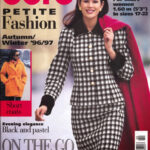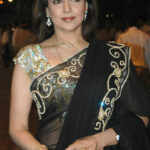Navigating the world of suits can seem daunting with countless options available. Understanding the fundamentals is key to making the right choice. This guide breaks down the essential suit types and styles for every occasion, helping you build a versatile and stylish wardrobe. Pair your suit with the perfect men’s dress shoes and accessories to complete your polished look.
Exploring the Different Types of Suits
The realm of men’s Suit Fashion is rich and diverse, offering a style for every event and personal taste. From the timeless single-breasted suit to the sophisticated double-breasted, and the ultimate formal wear of tuxedos, the choices are extensive. For the practical traveler, travel suits provide wrinkle resistance, while linen suits offer breathability and comfort for warmer climates. This guide will navigate you through the different suit types, ensuring you select a suit that not only fits the occasion but also elevates your individual style within suit fashion.
Single-Breasted Suits: The Timeless Wardrobe Staple
The single-breasted suit stands as a cornerstone of men’s suit fashion, celebrated for its classic design featuring a single row of buttons down the front. As the most frequently worn suit style, it offers exceptional versatility. Typically, these suits feature one to three buttons. A key style tip for multi-button single-breasted jackets is to always leave the last button undone. The fewer buttons, generally the more casual the suit becomes, making it adaptable for various settings.
Key Features: Single row of buttons (1-3), versatile lapel options including peak, notch, and shawl.
Style Effect: Creates a slimming silhouette, subtly drawing attention away from the midsection.
Double-Breasted Suits: Exuding Confidence and Formality
The double-breasted suit represents a bolder statement in suit fashion, distinguished by its overlapping front panels and two parallel rows of buttons. Commonly featuring six buttons, though variations with four or eight exist, this suit style demands a sophisticated approach. Similar to its single-breasted counterpart, the golden rule of leaving the last button undone applies. Double-breasted suits are inherently dressier, lending themselves perfectly to formal occasions. Beyond formality, they offer a flattering silhouette, broadening the shoulders and creating a leaner appearance, which can also make the wearer seem taller – a welcome advantage in suit fashion.
- Key Features: Two columns of buttons, typically 4, 6, or 8 buttons, creating a layered front.
- Style Effect: Slimming and shoulder-accentuating, adding perceived height and formality.
Single-Breasted vs. Double-Breasted Suits: Key Differences
Understanding the nuances between single-breasted and double-breasted suits is crucial in suit fashion. While both are essential components of a well-rounded wardrobe, their formality and style impact differ significantly. The table below summarizes the key distinctions to guide your choice.
| Type | Description | Occasion |
|---|---|---|
| Single-Breasted | Single button row, narrow fabric overlap, versatile and common. | Business meetings, everyday wear, casual events |
| Double-Breasted | Two button rows, wider fabric overlap, more formal and structured. | Formal events, weddings, upscale gatherings |
| Tuxedo | Formal suit with satin lapels, buttons, and trouser stripes, peak of evening elegance. | Black-tie events, galas, formal dinners |
| Three-Piece | Includes jacket, trousers, and a matching vest, adding depth and formality. | Business formal settings, special occasions, weddings |
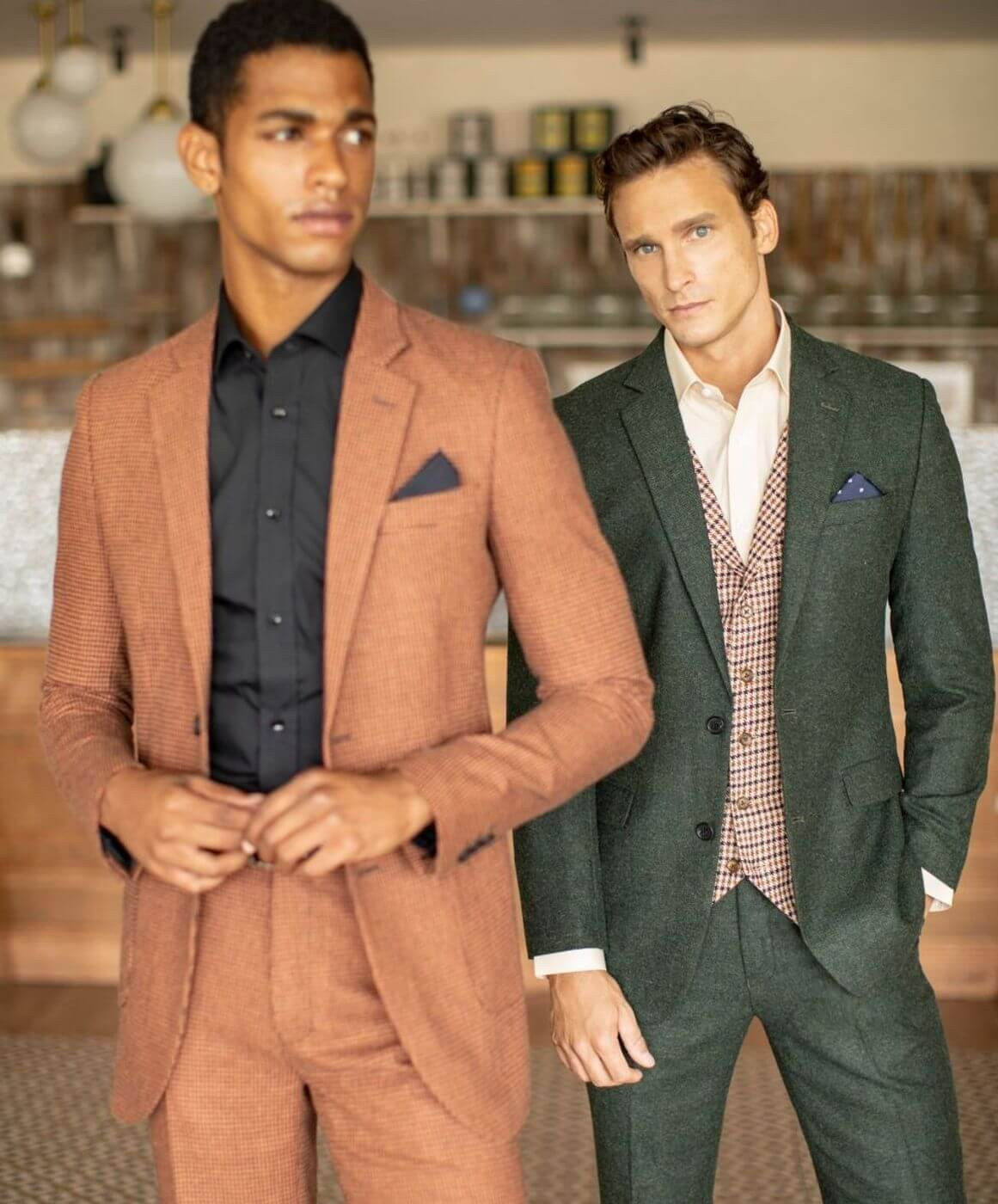
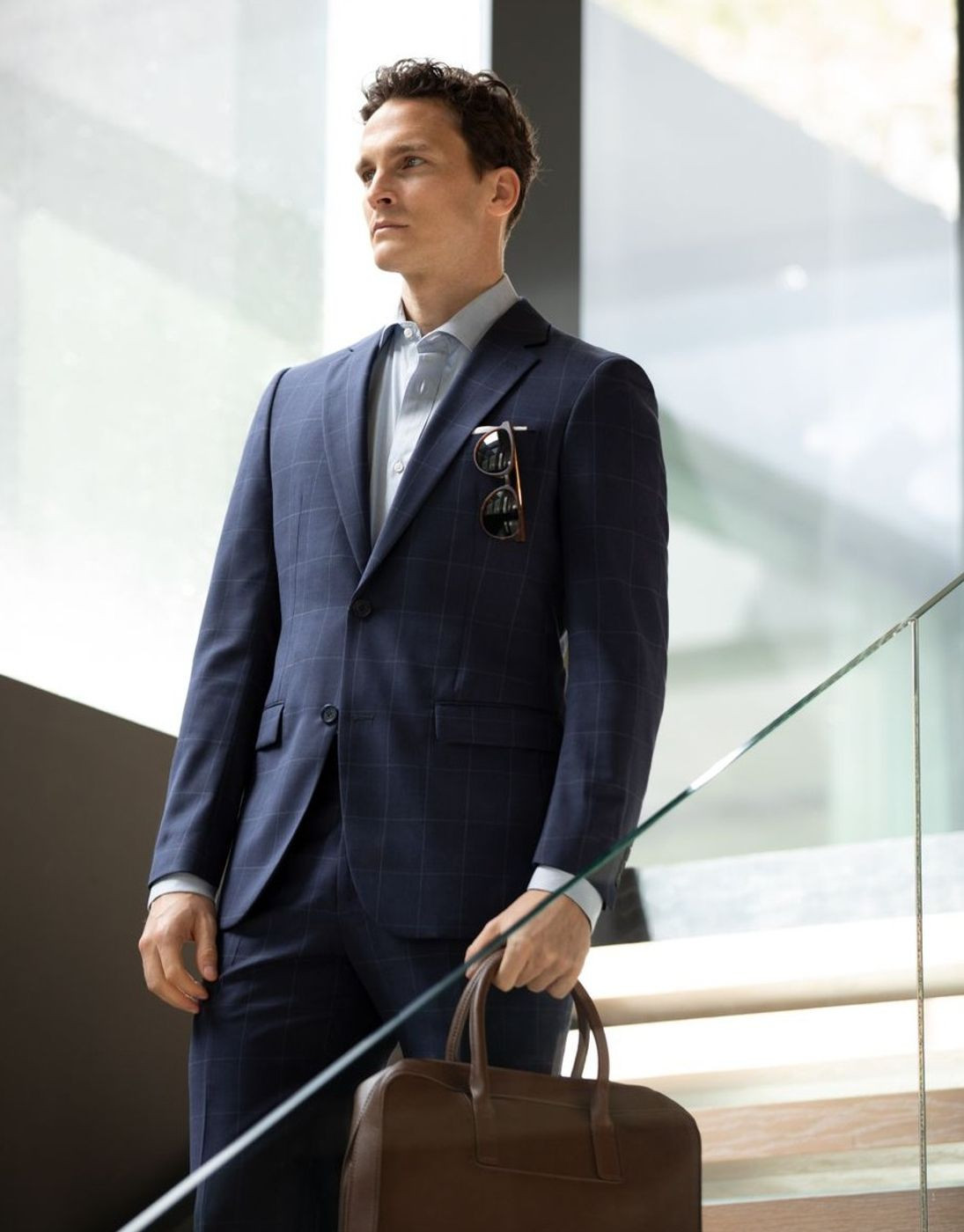
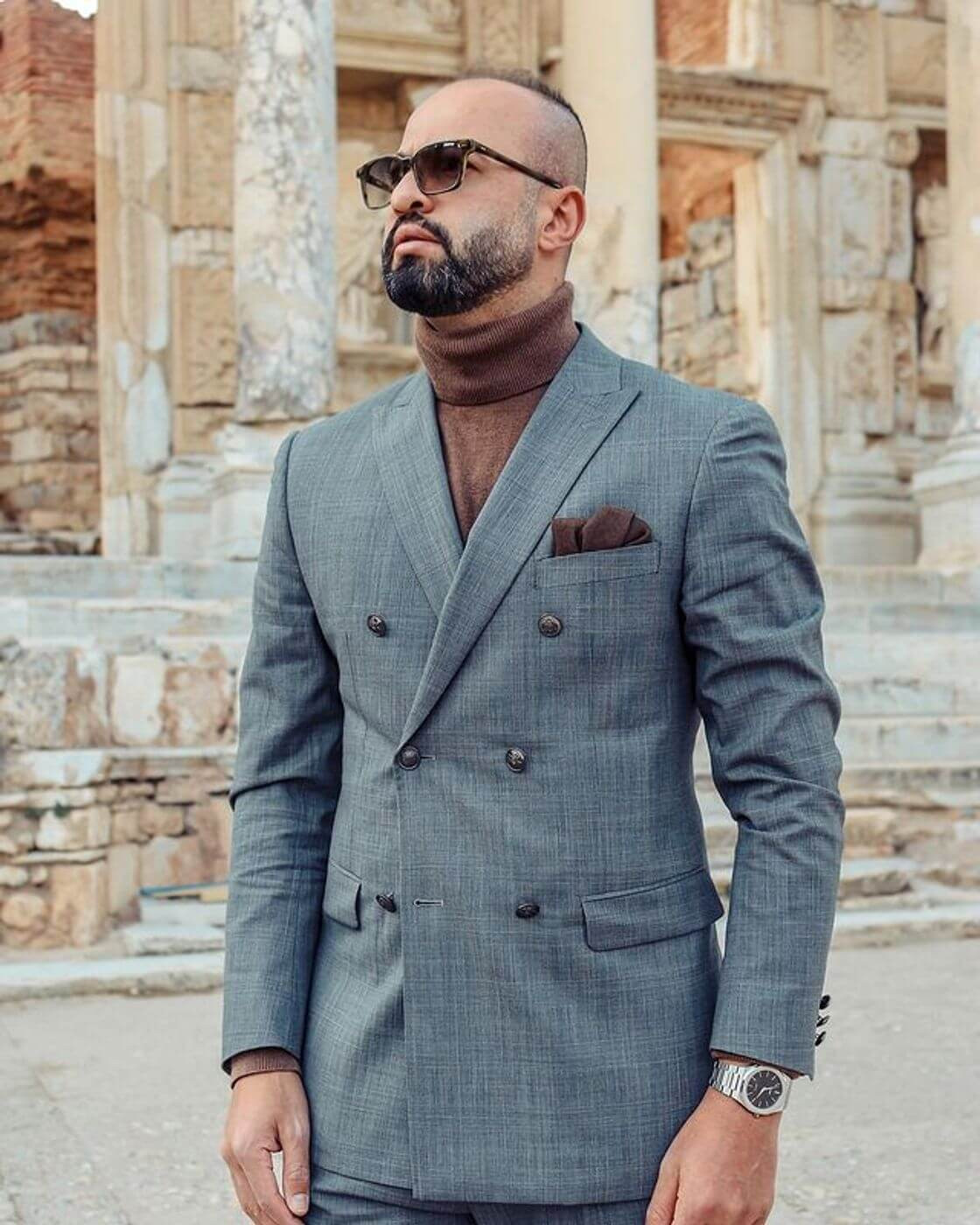
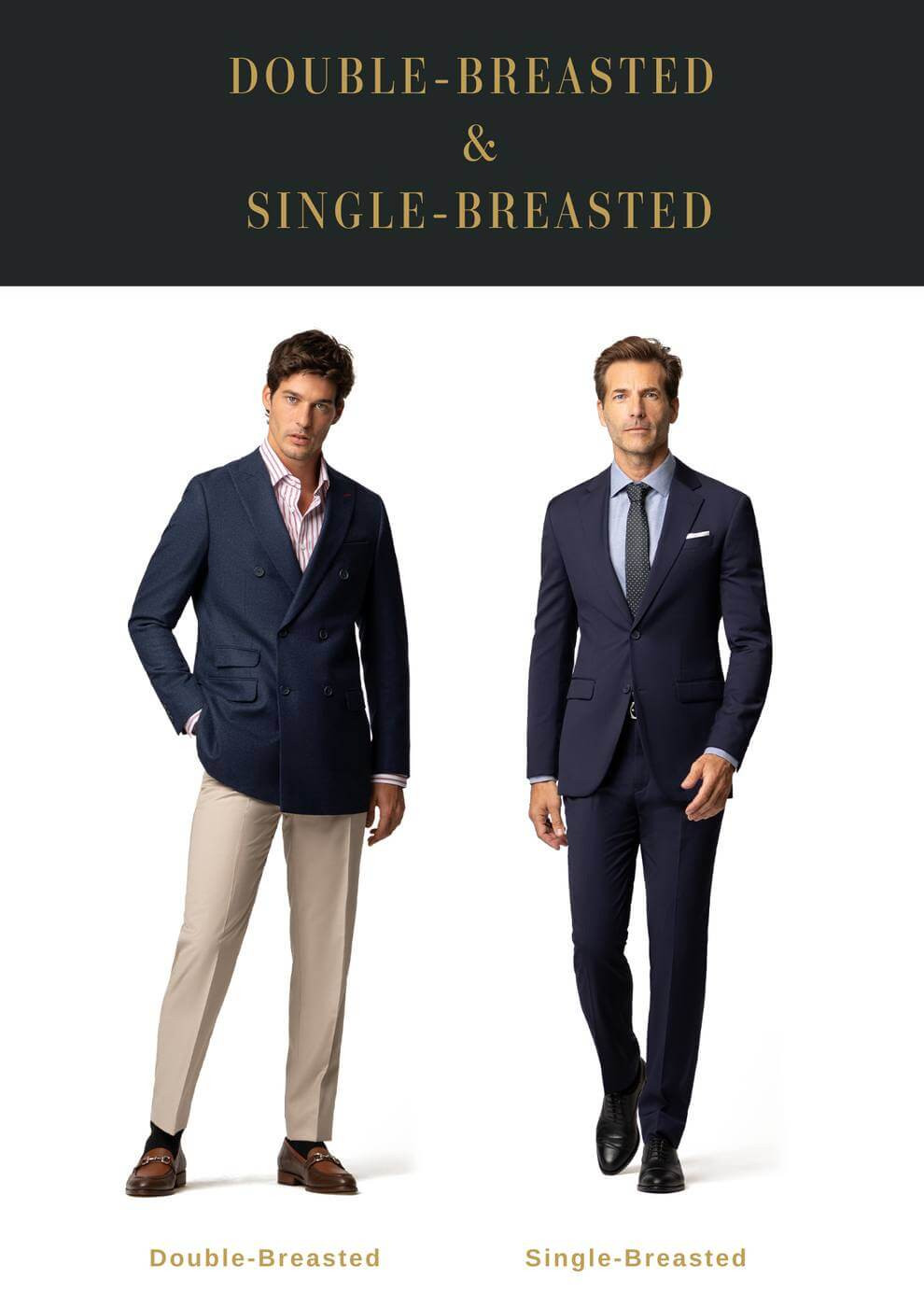
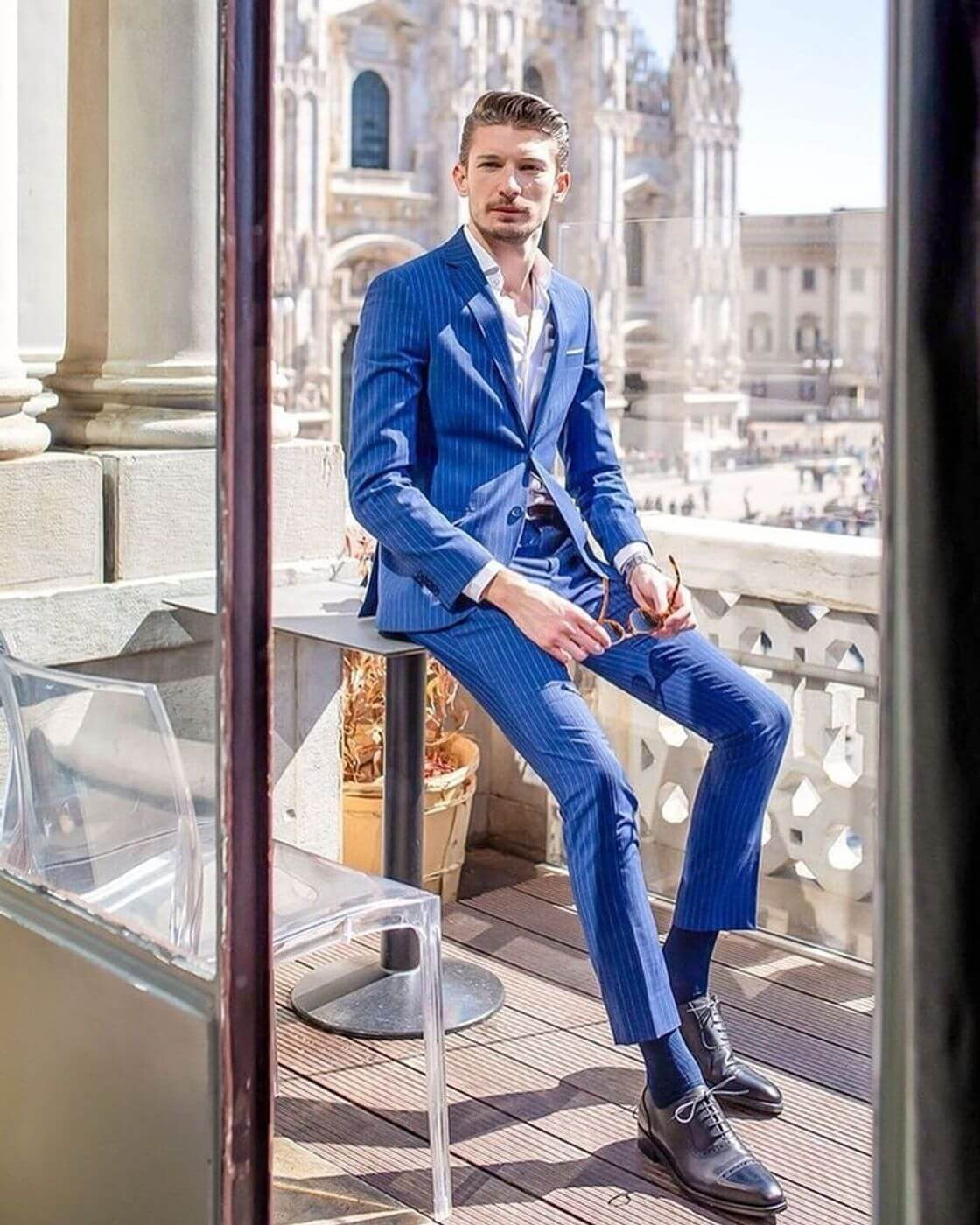
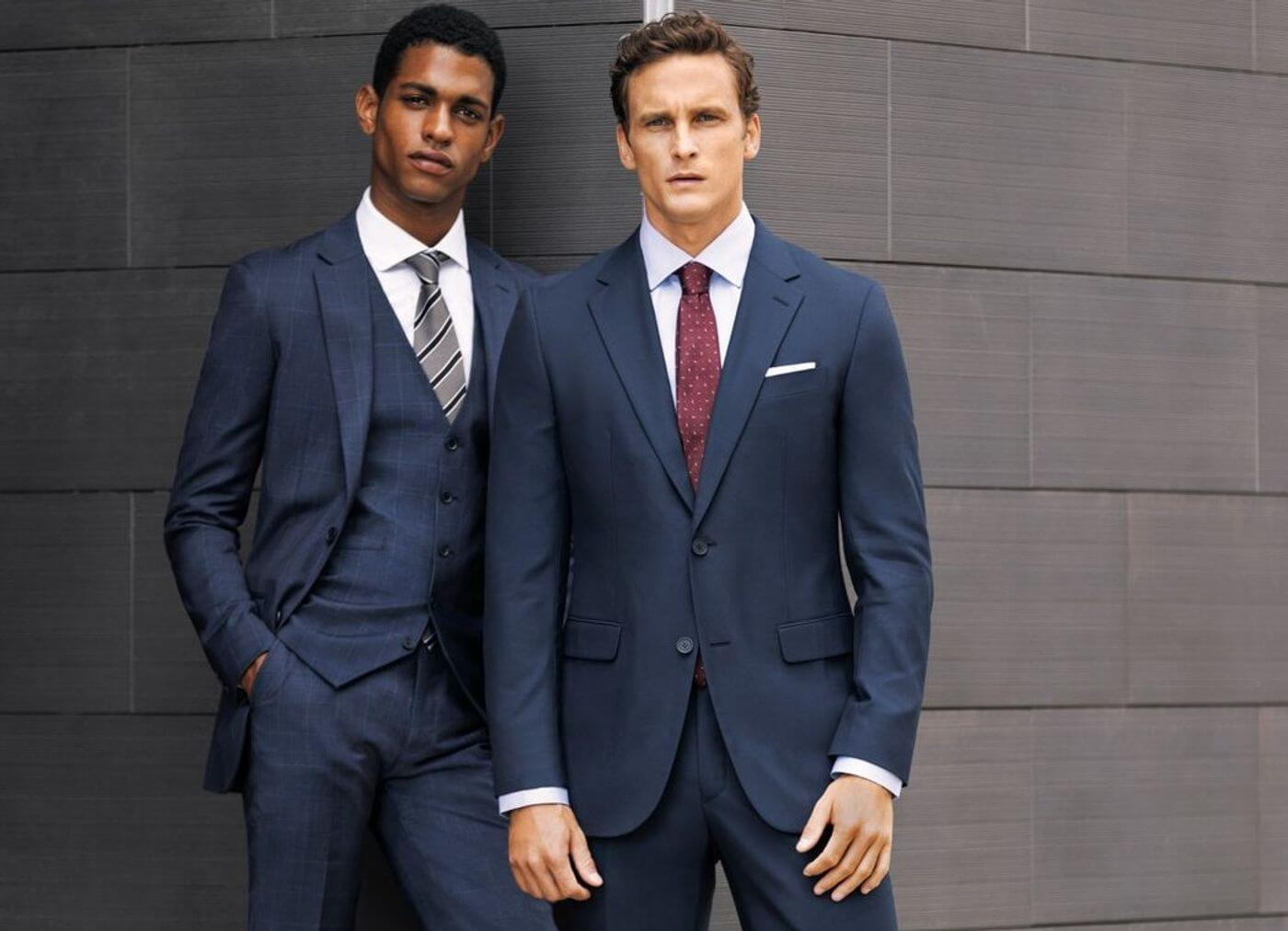

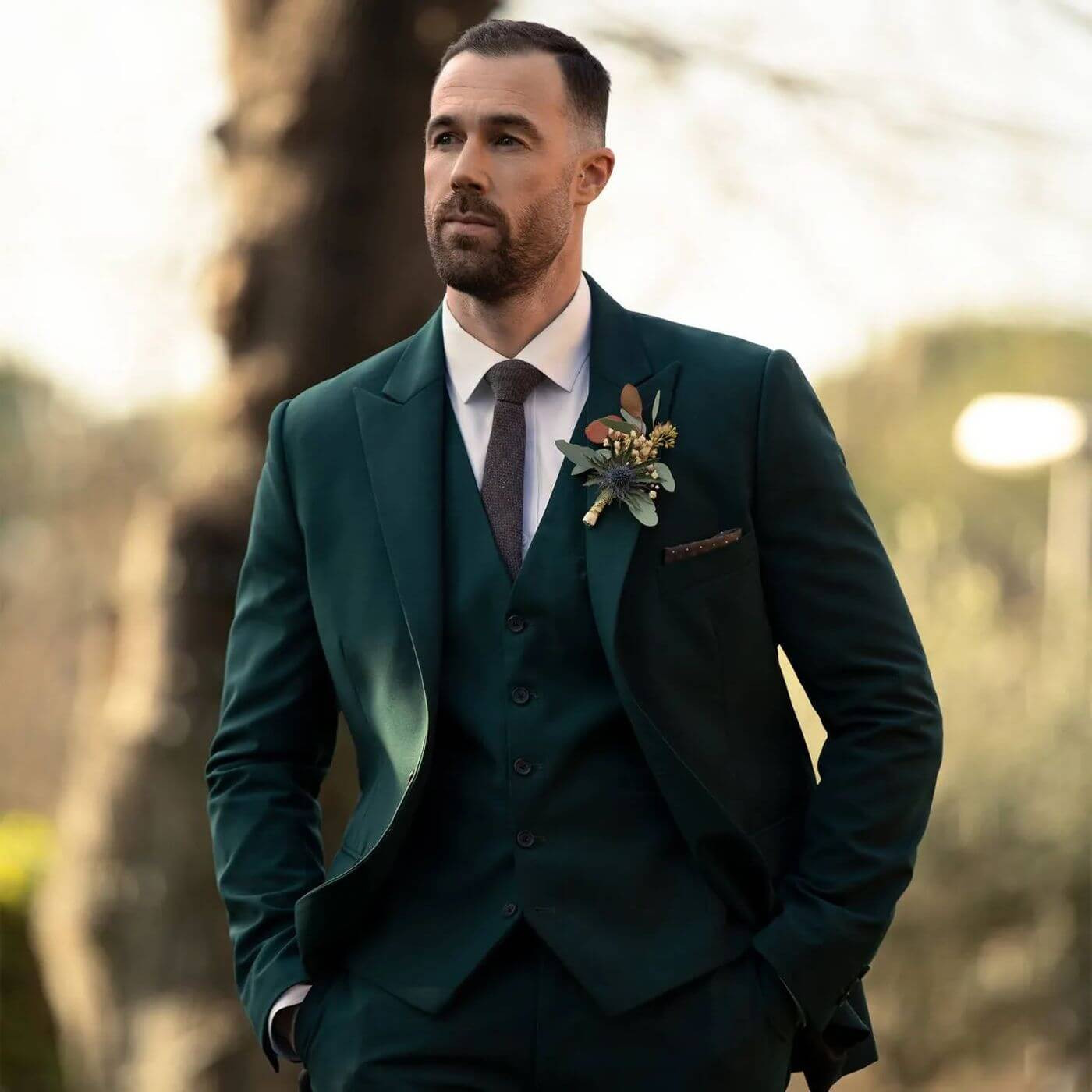
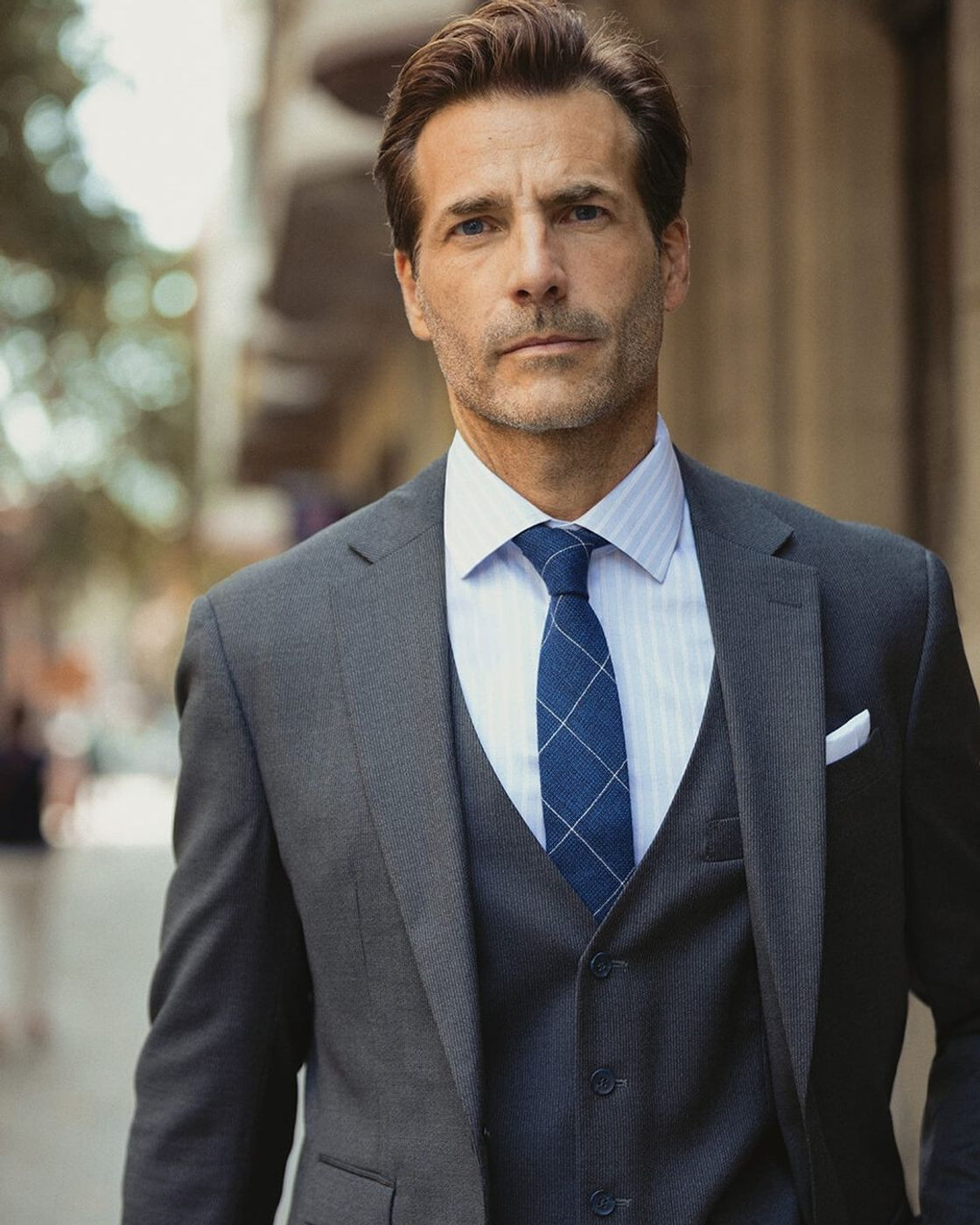
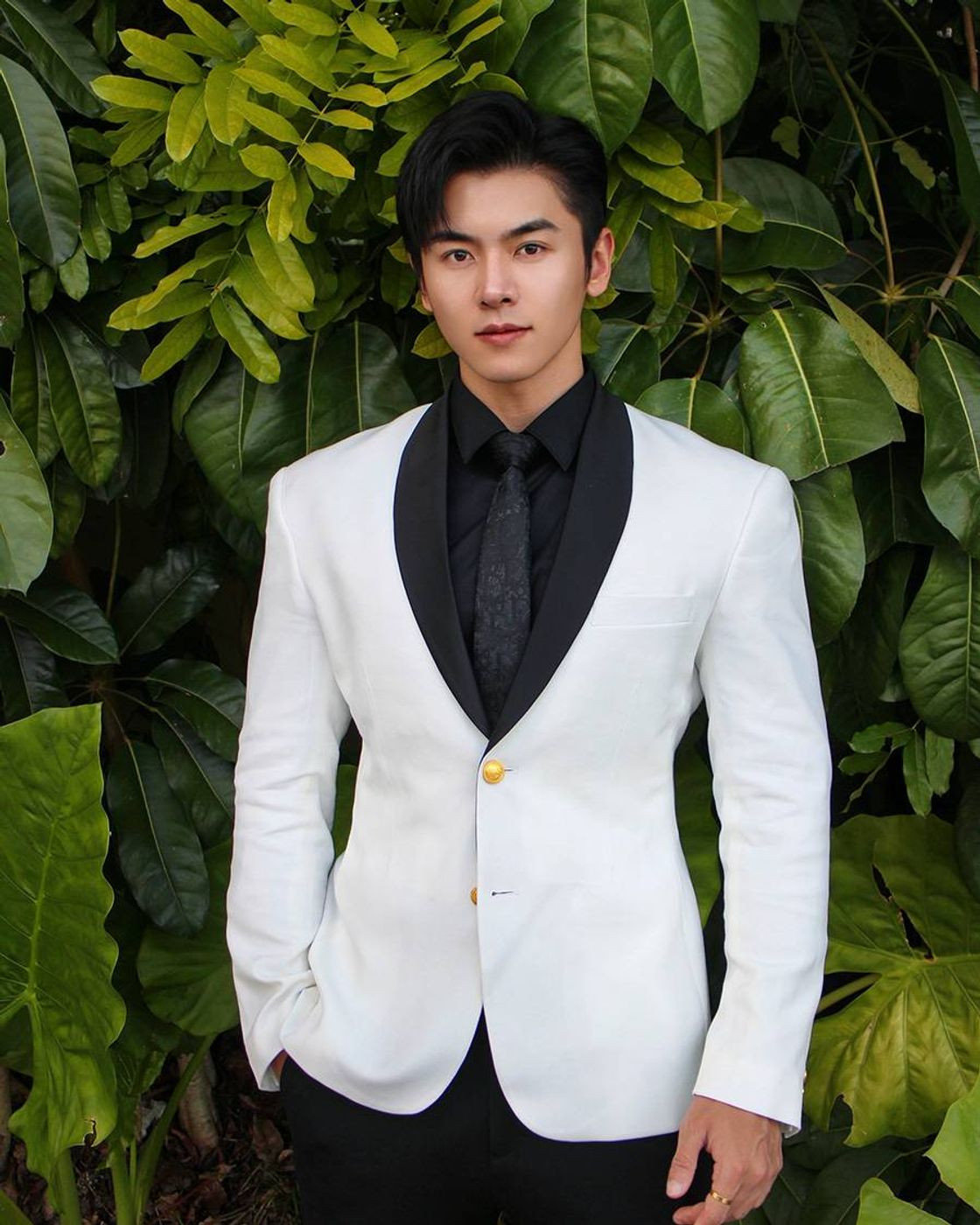
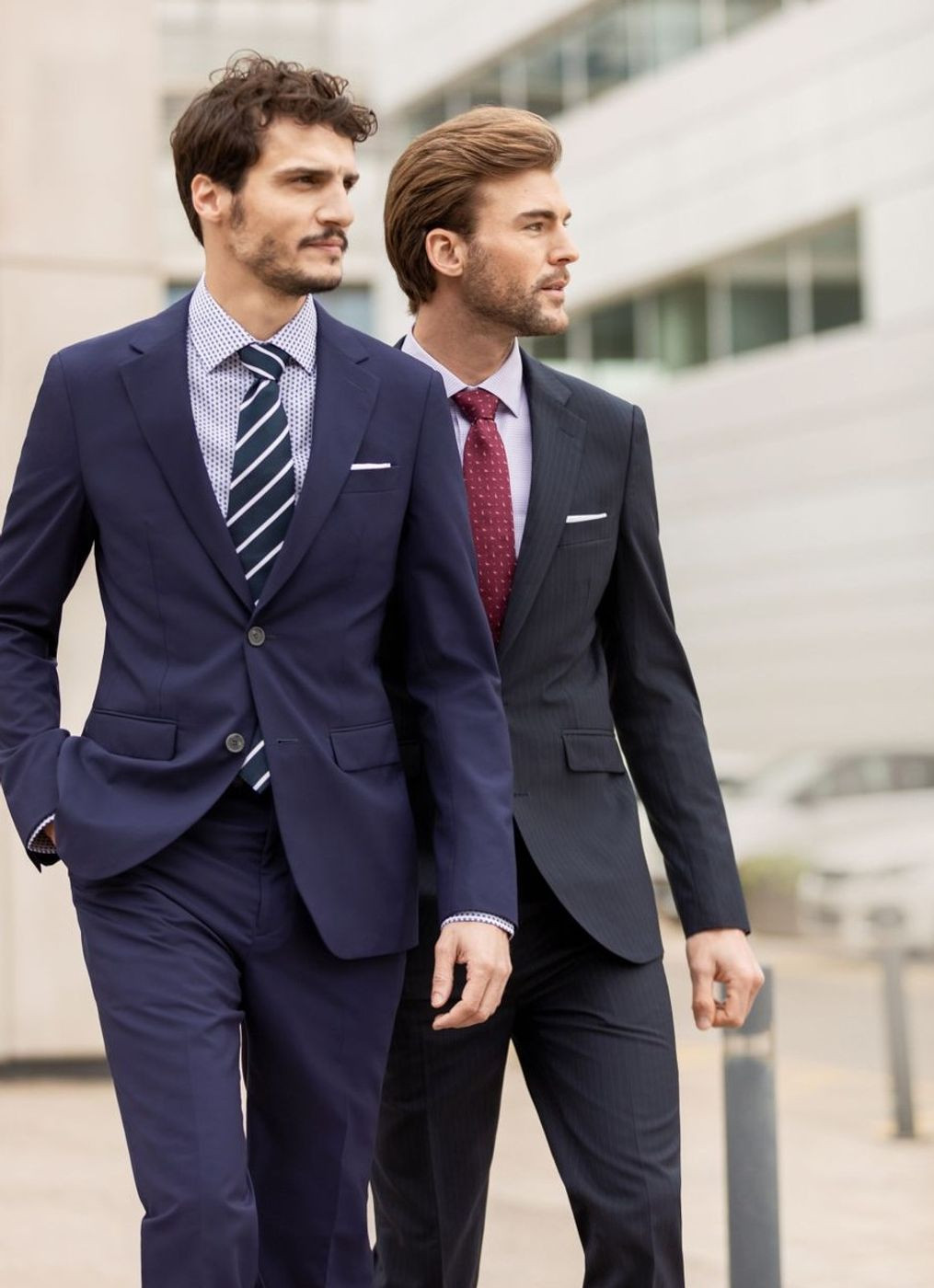
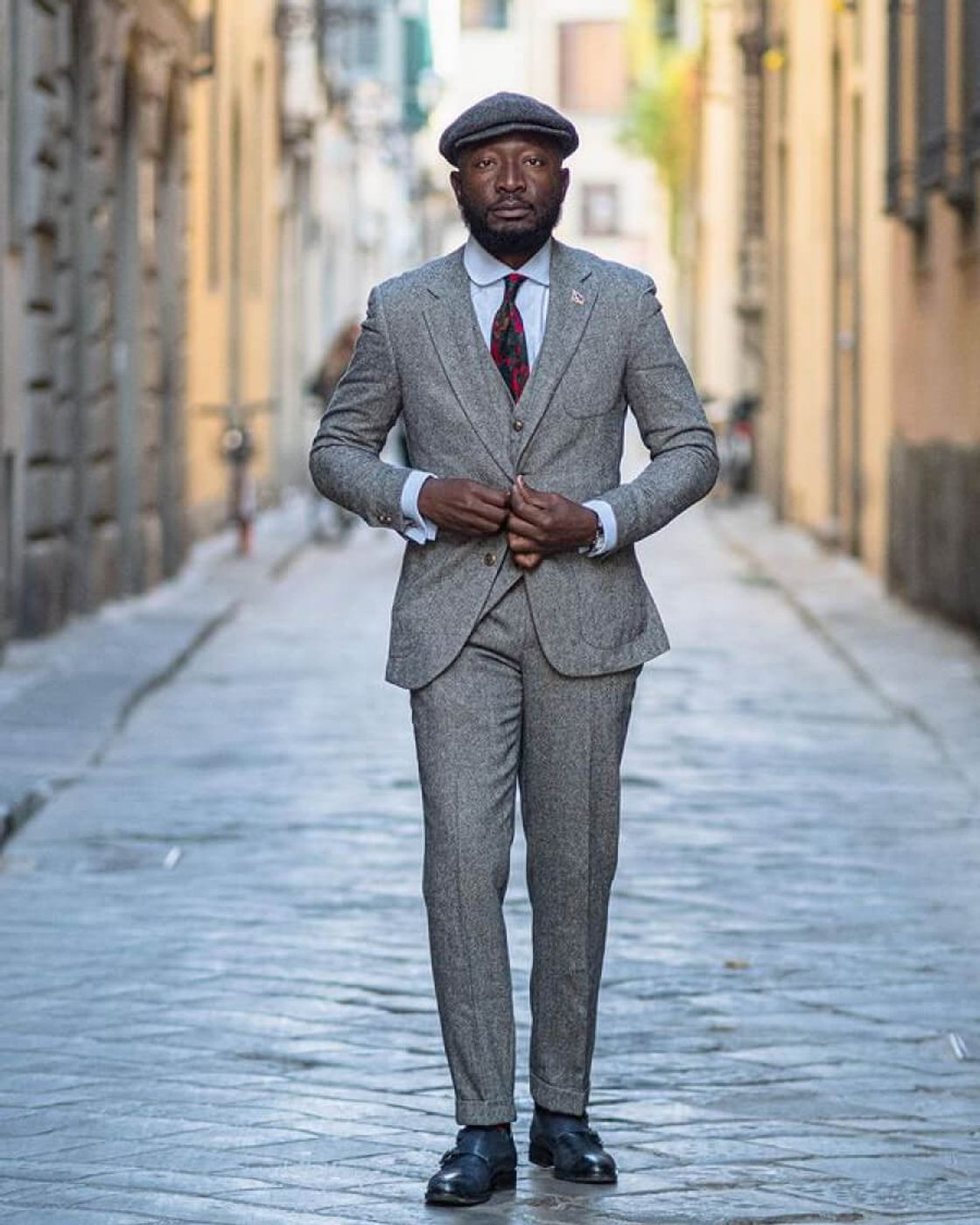
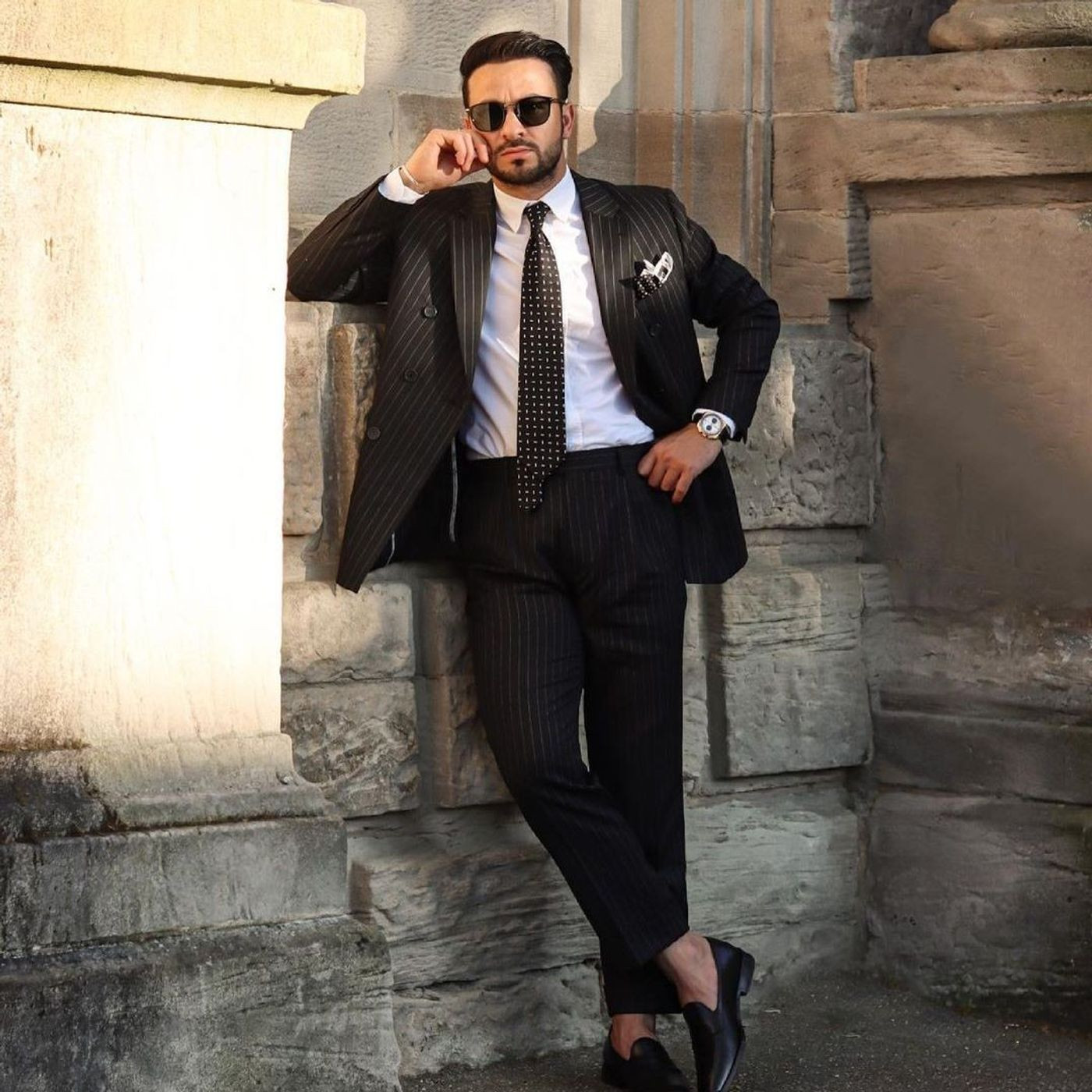
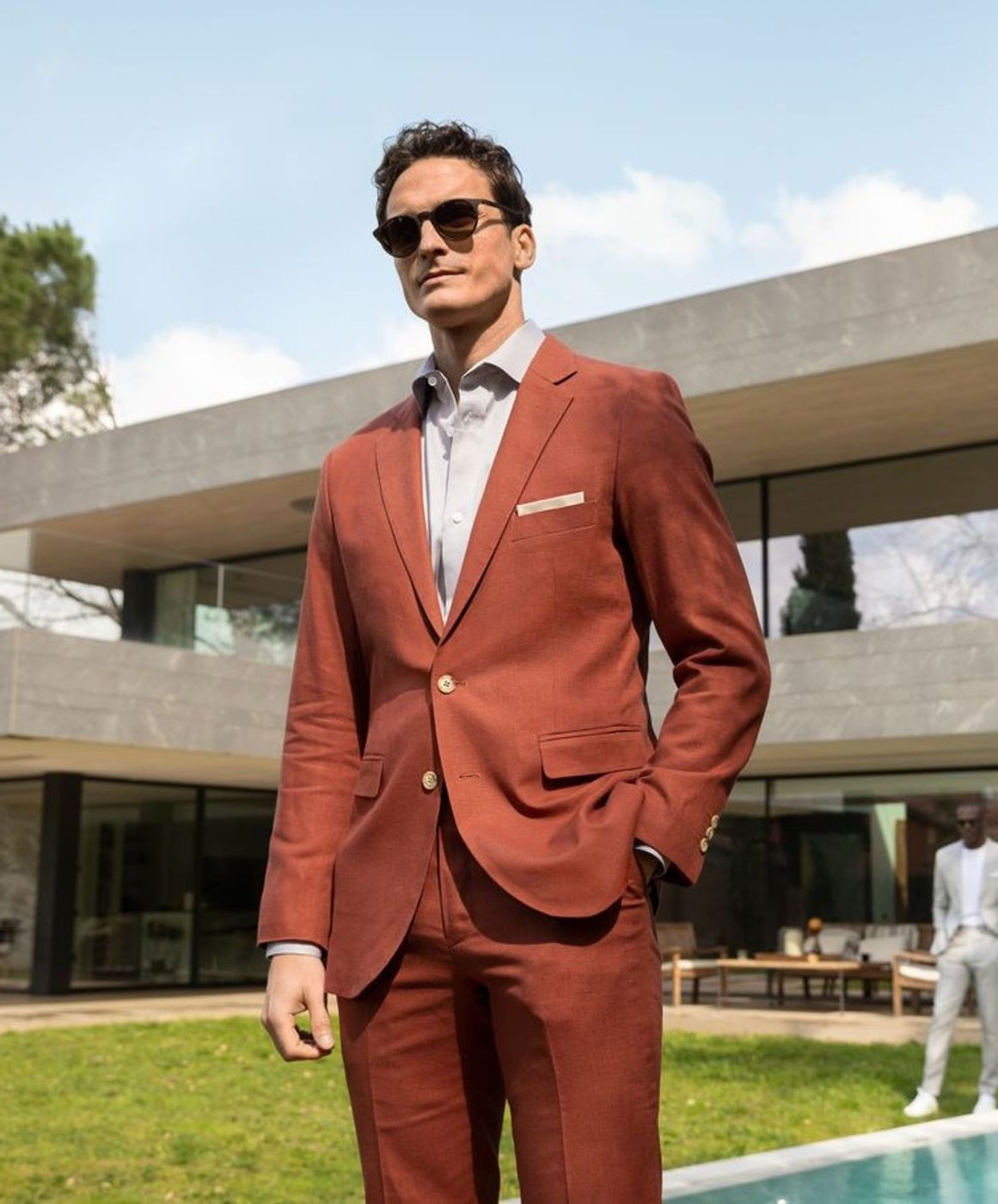
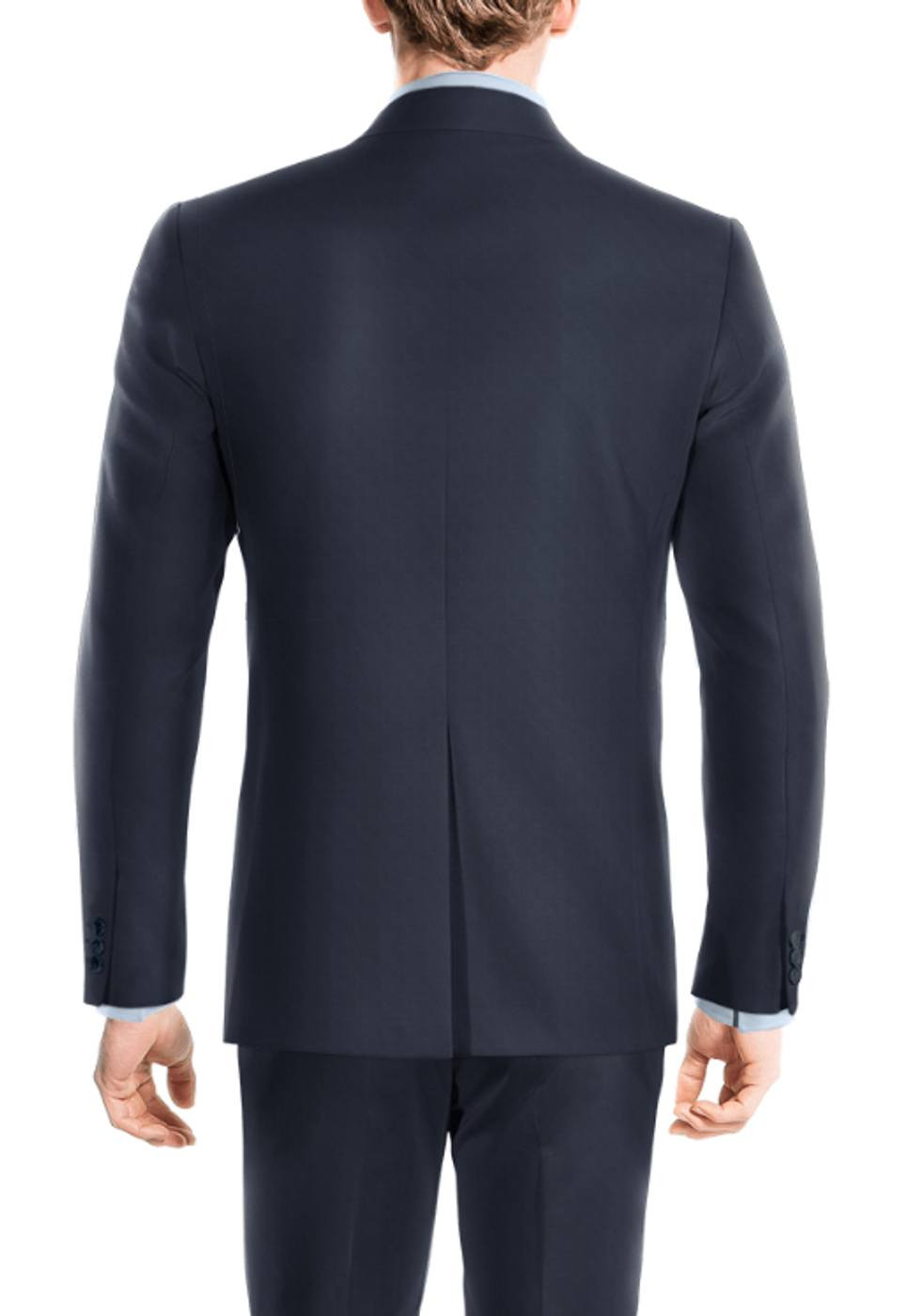
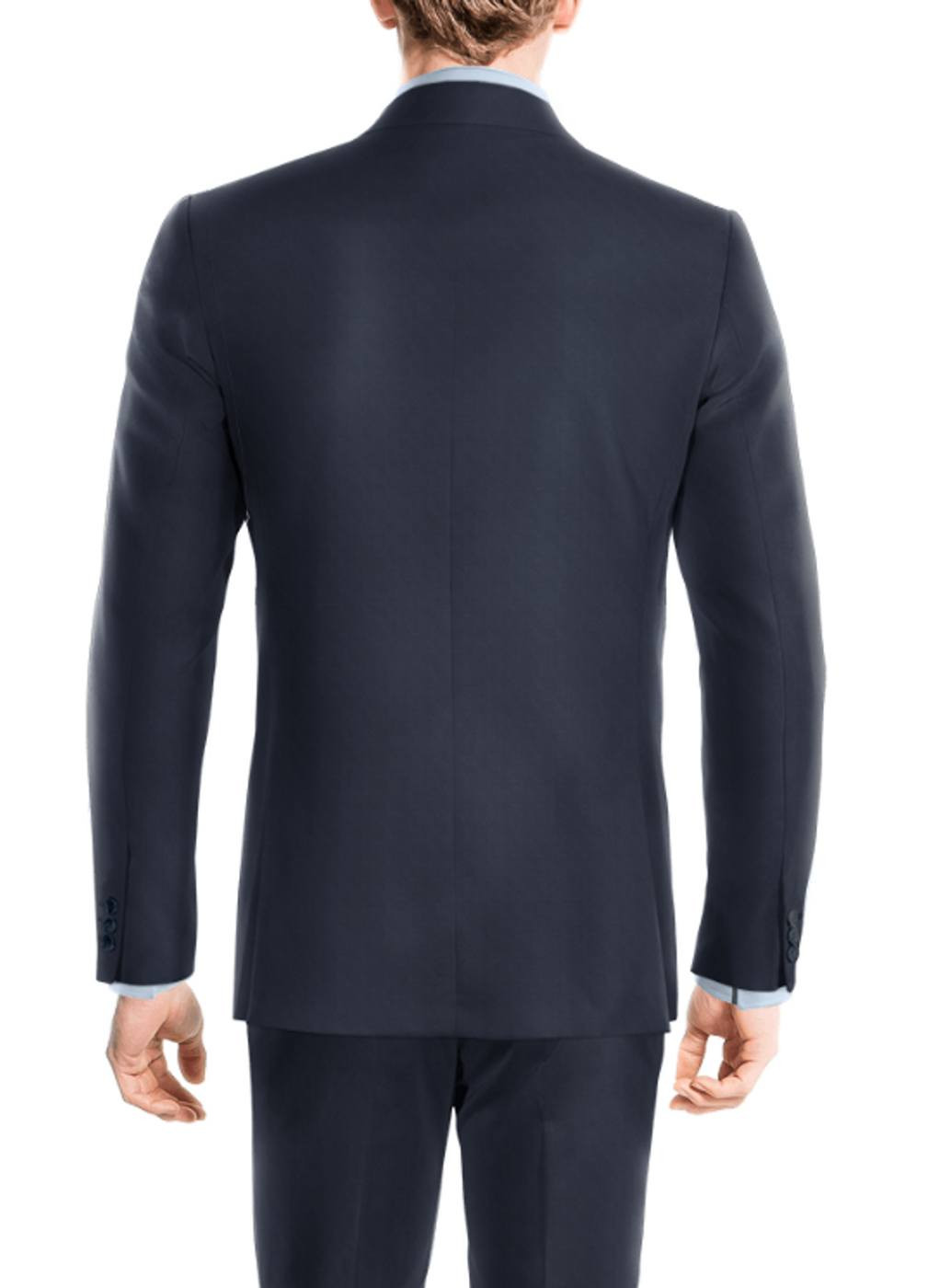
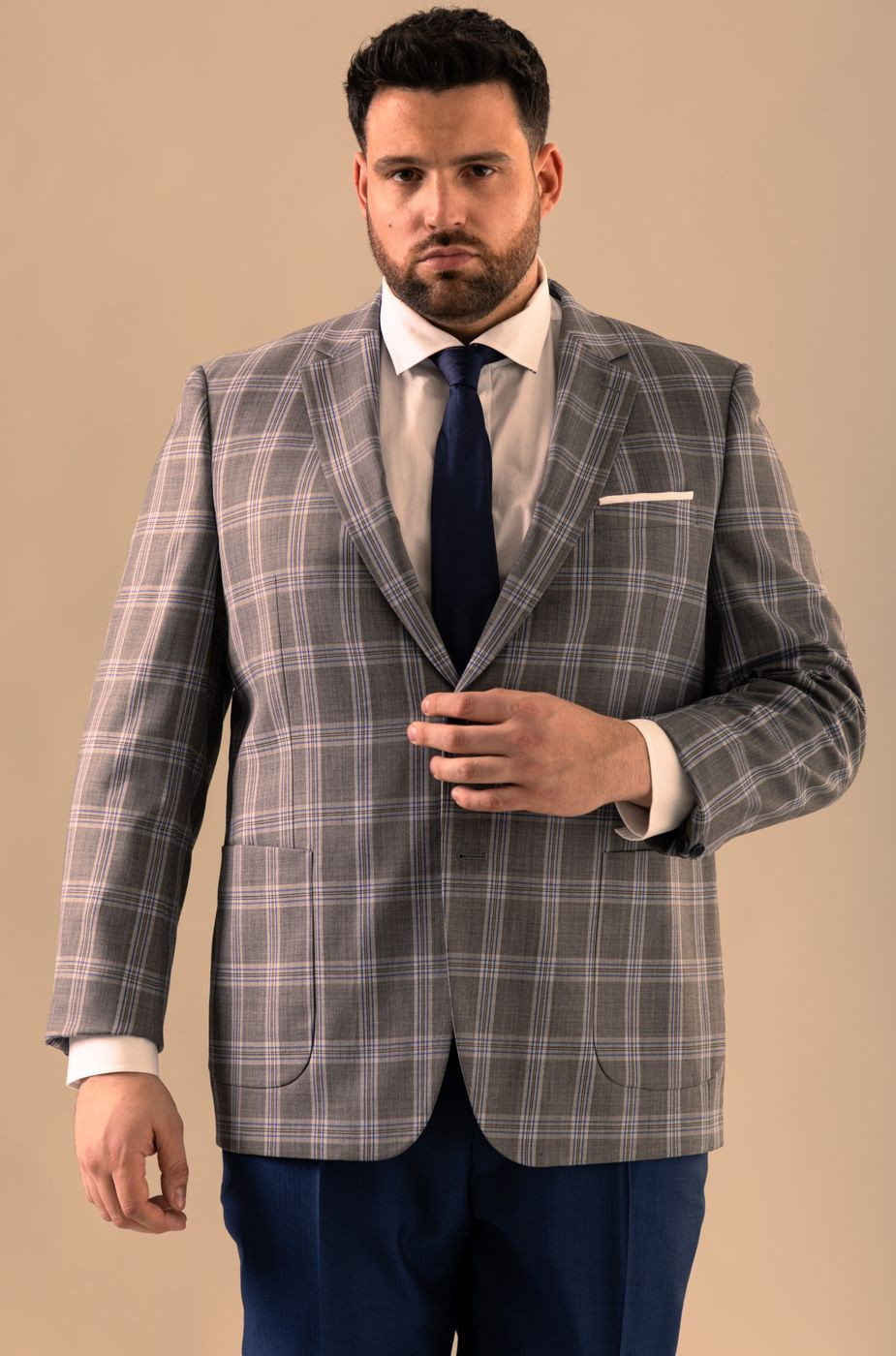
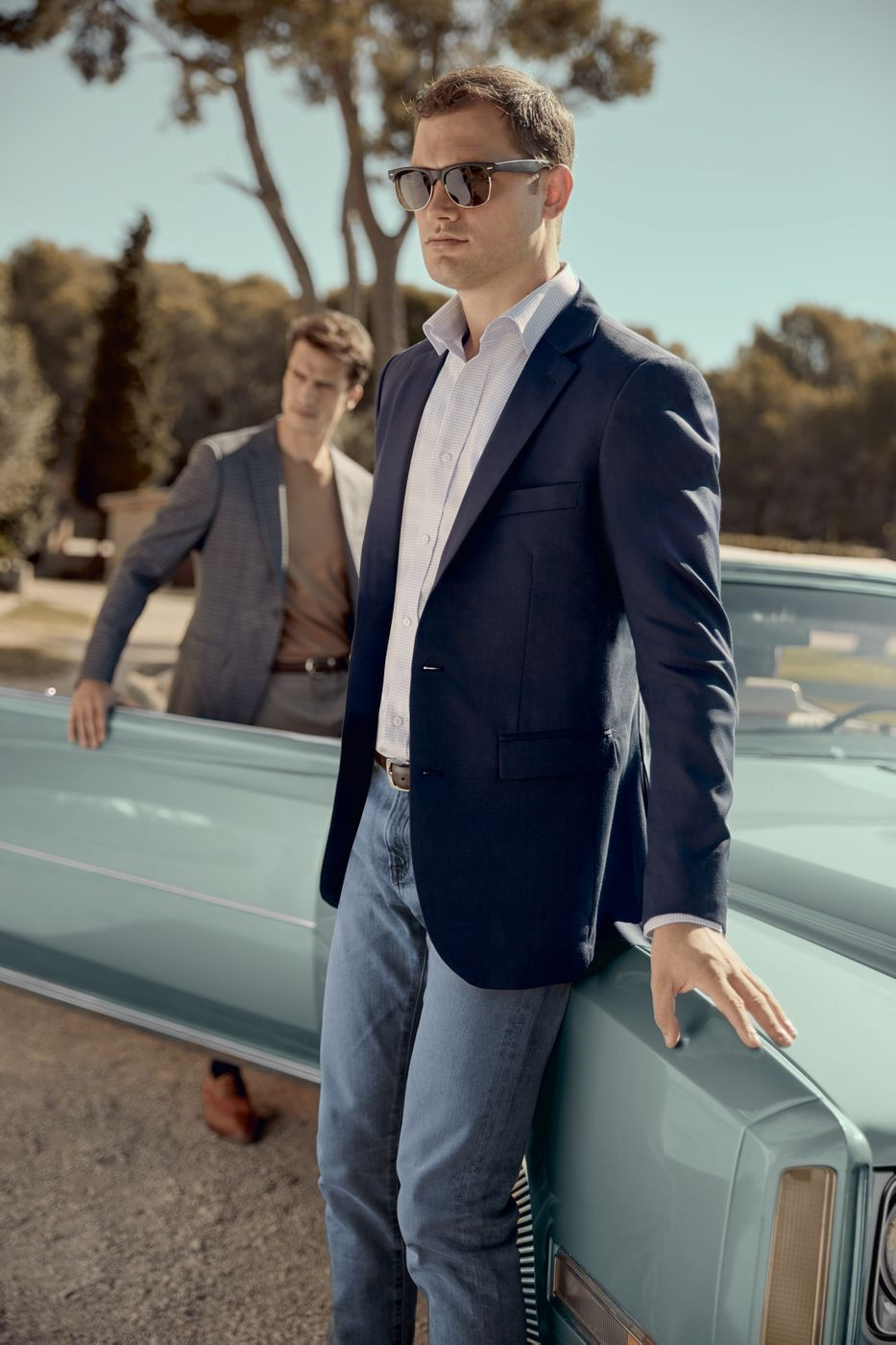
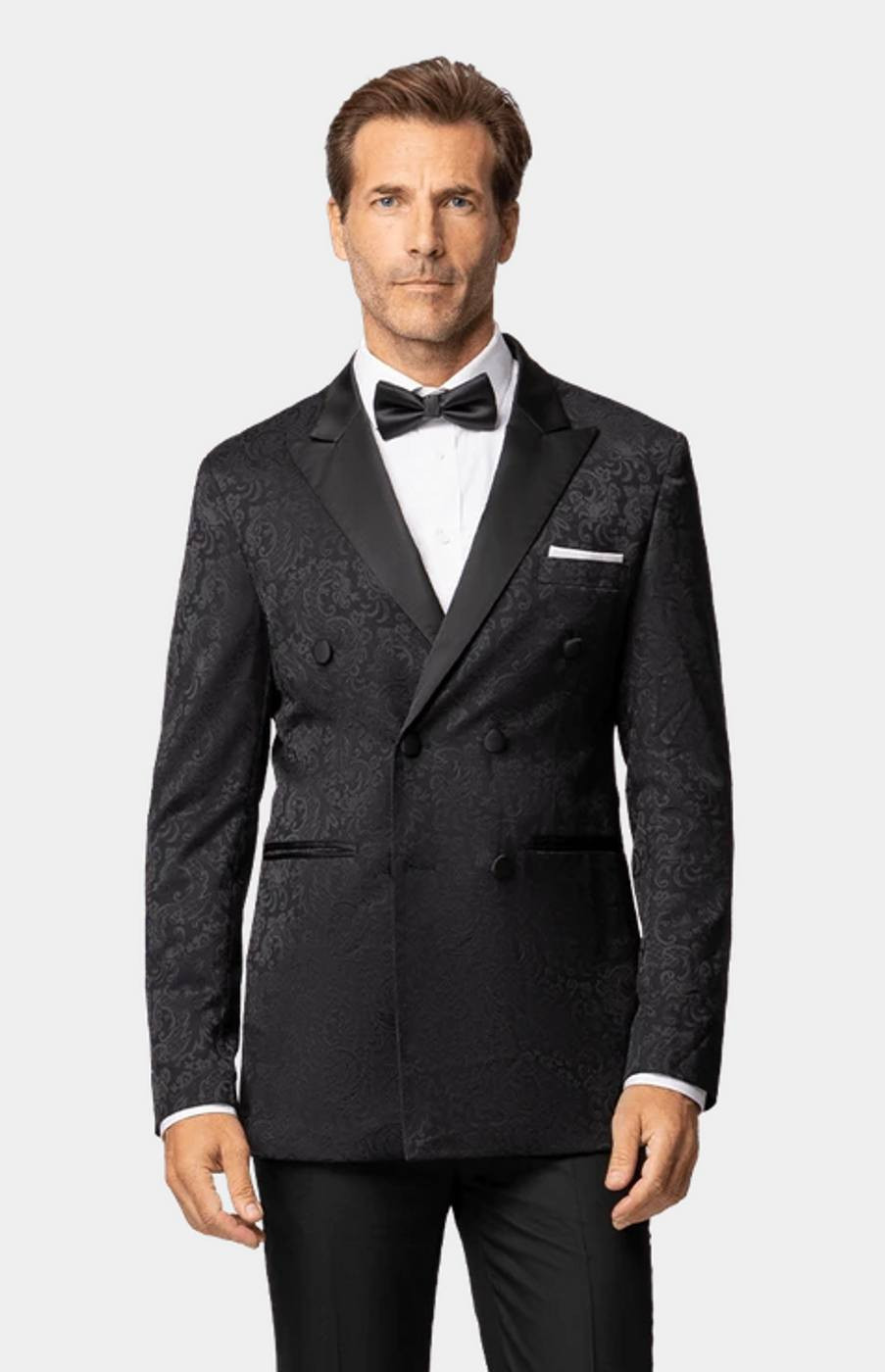
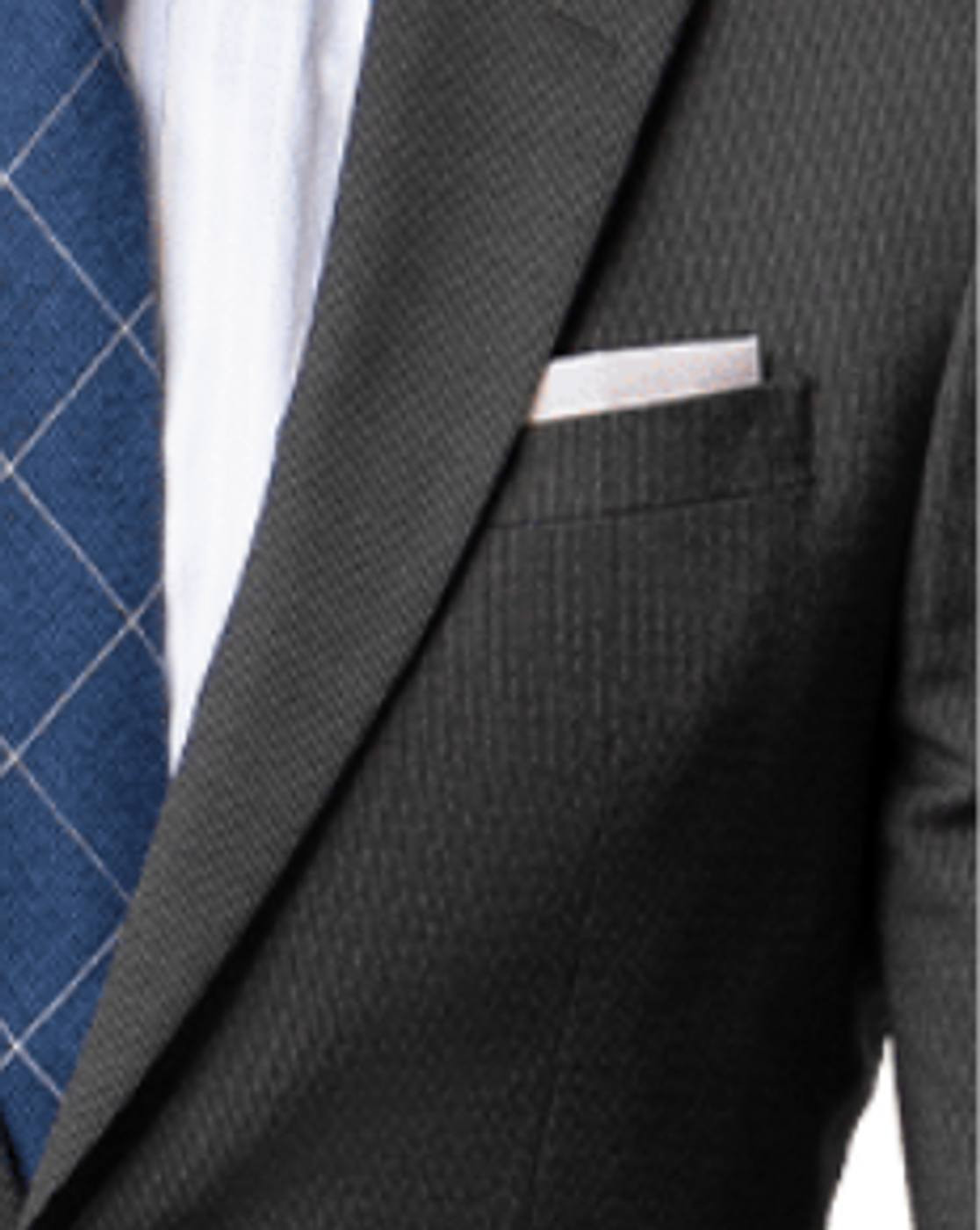
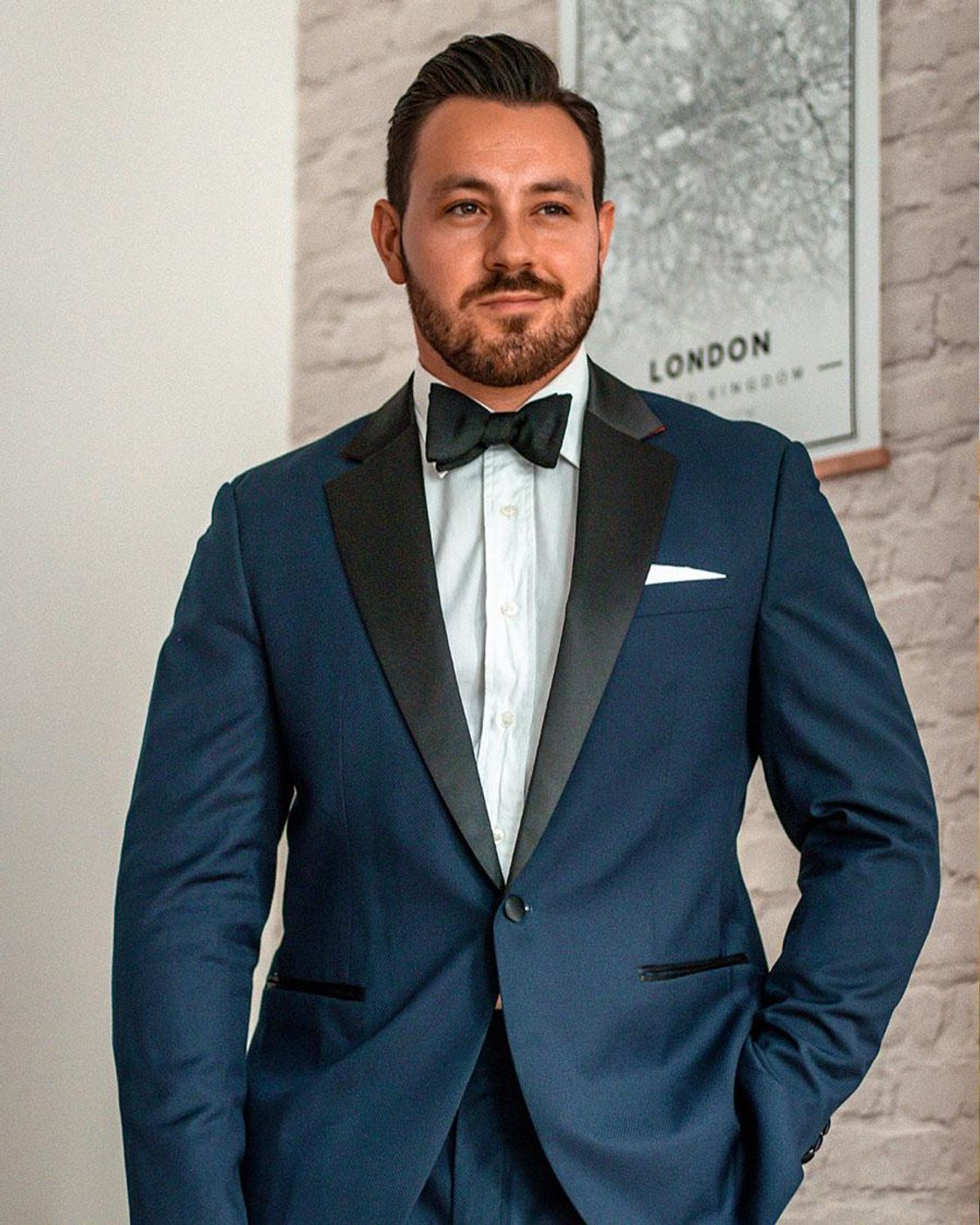
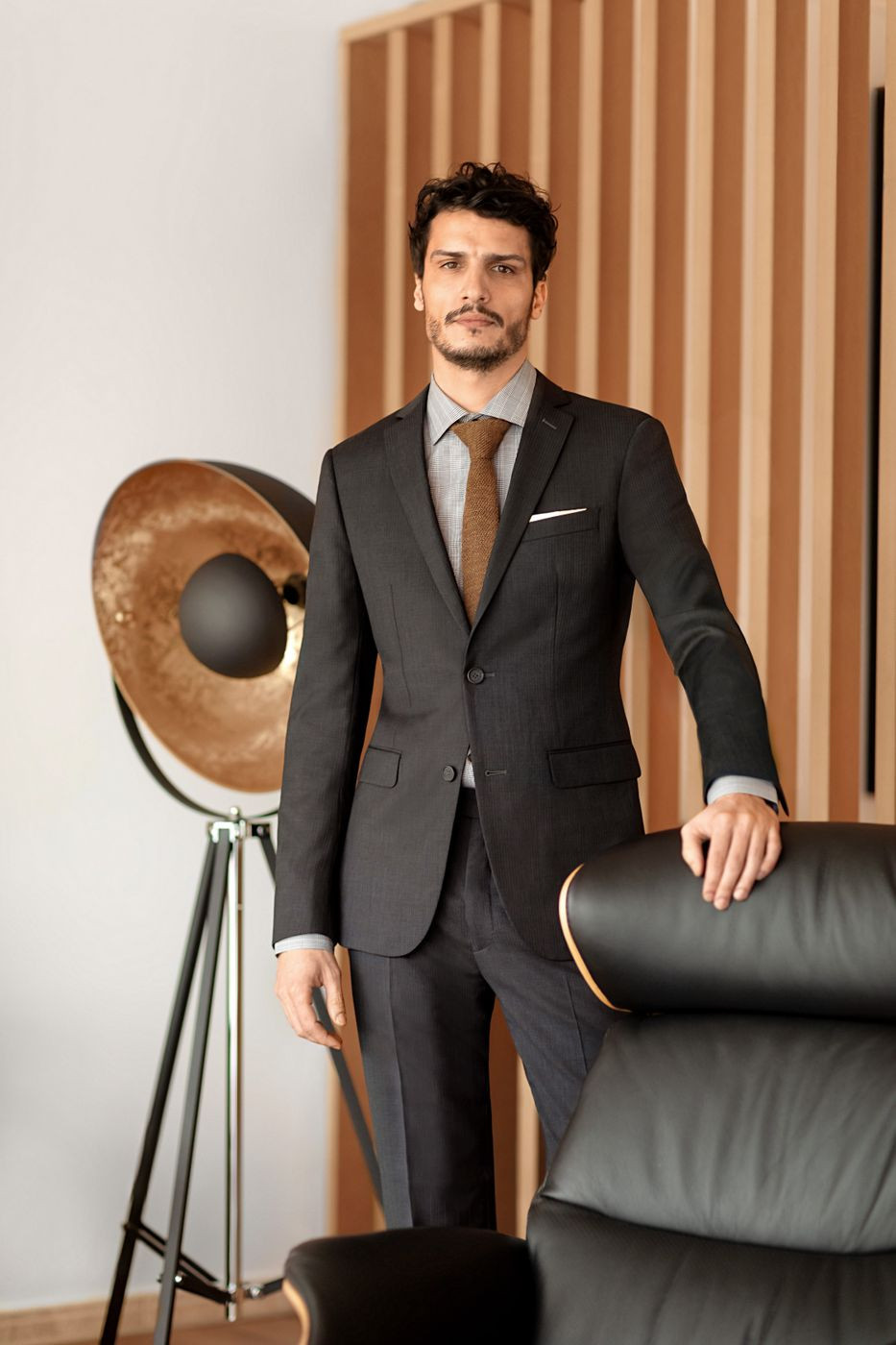
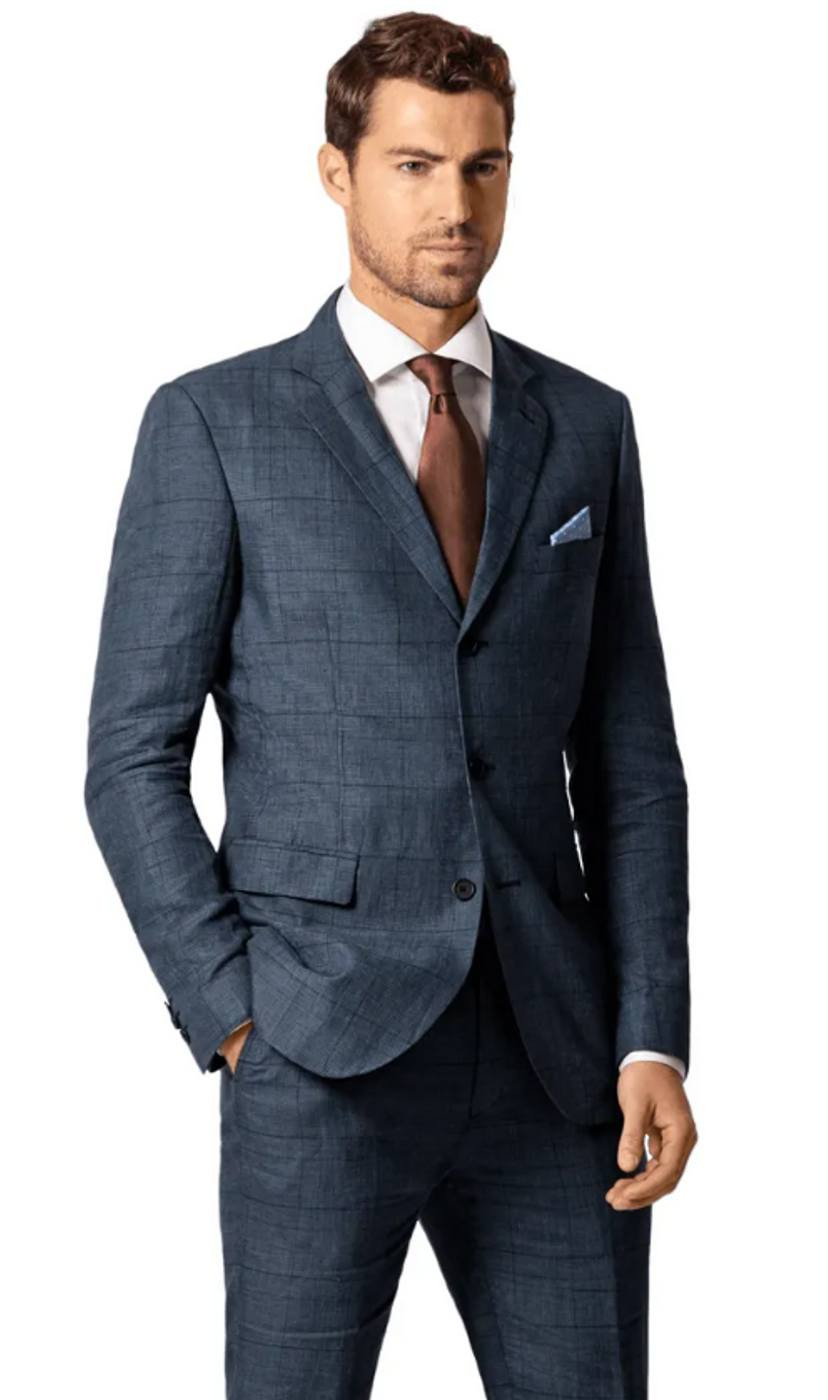
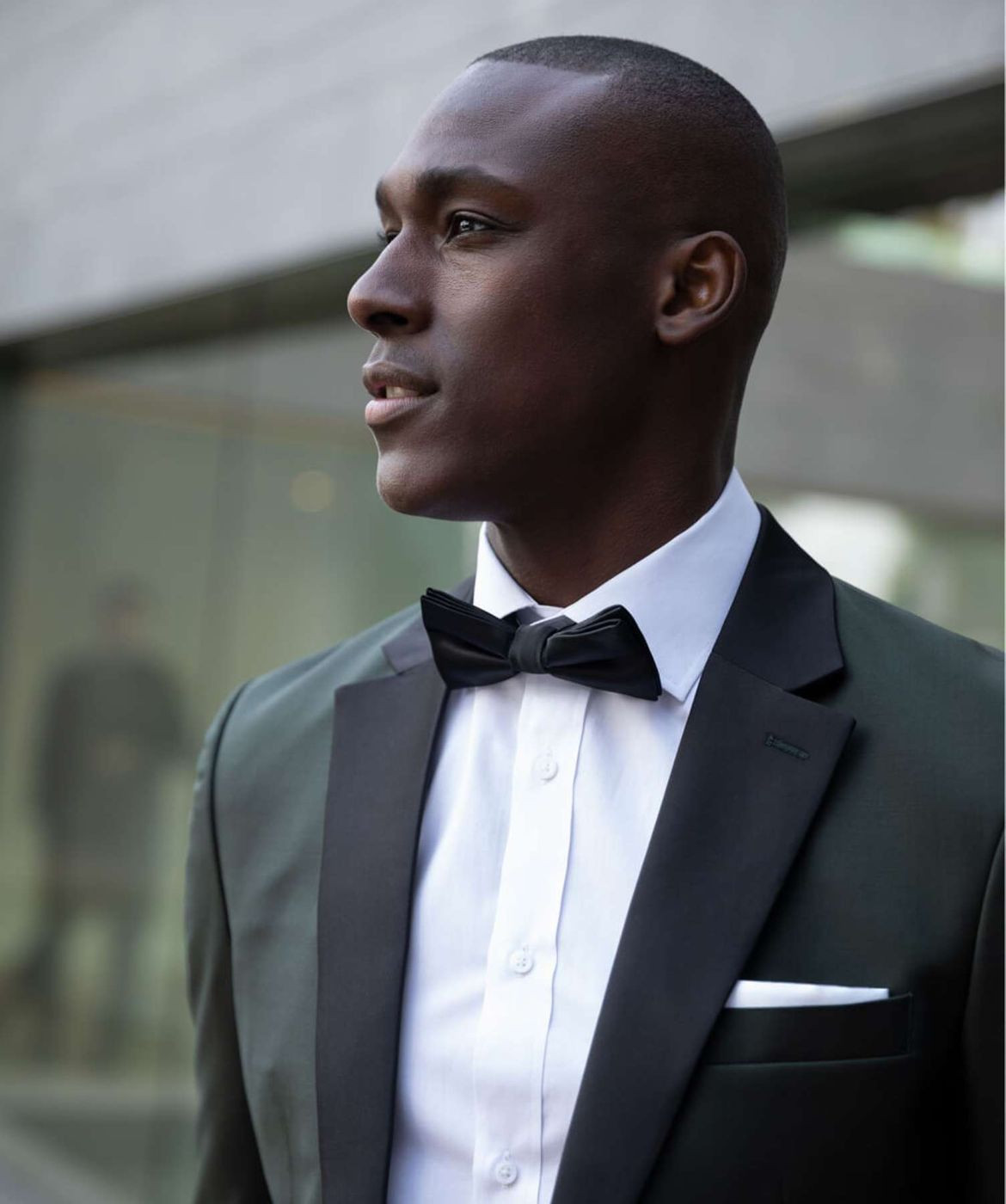
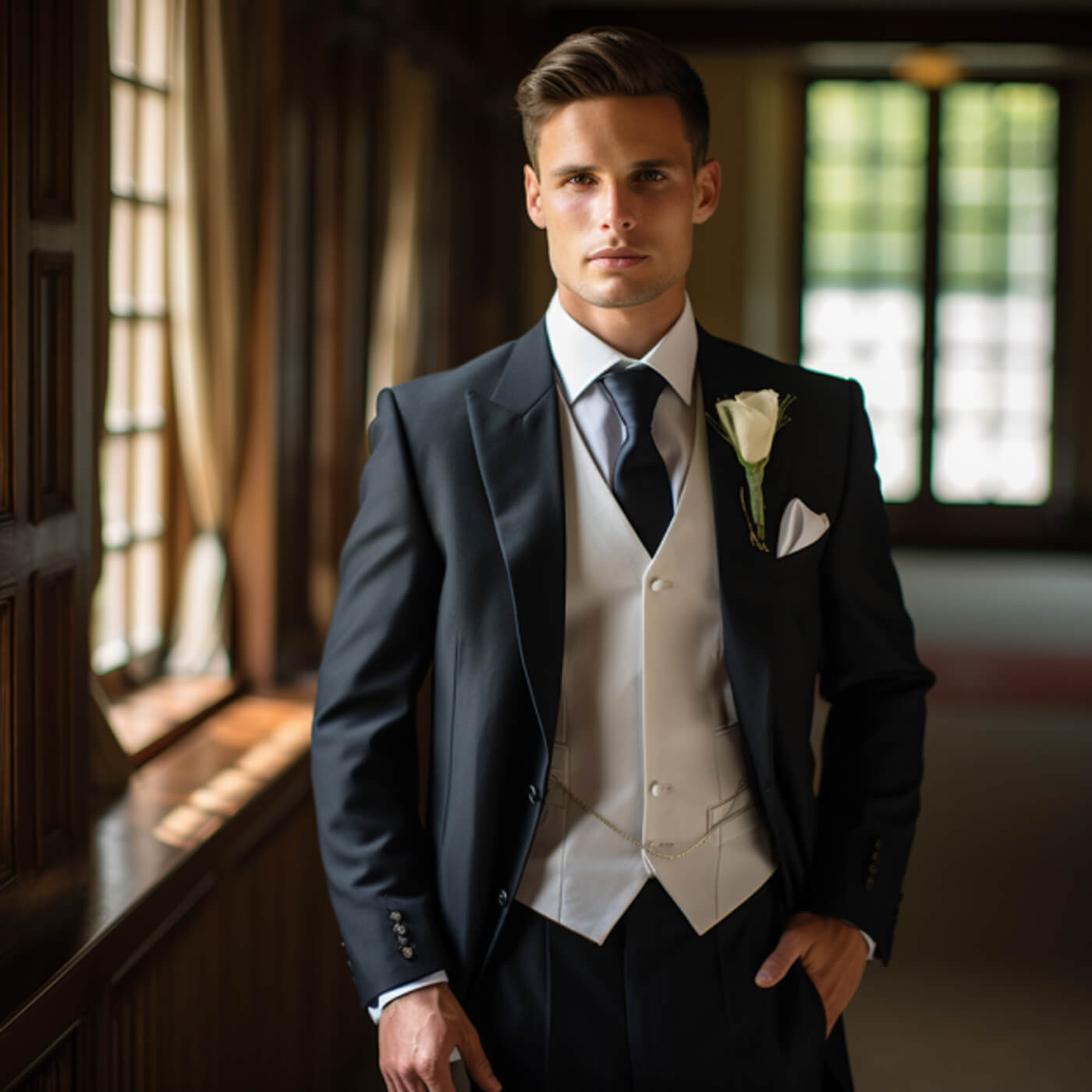
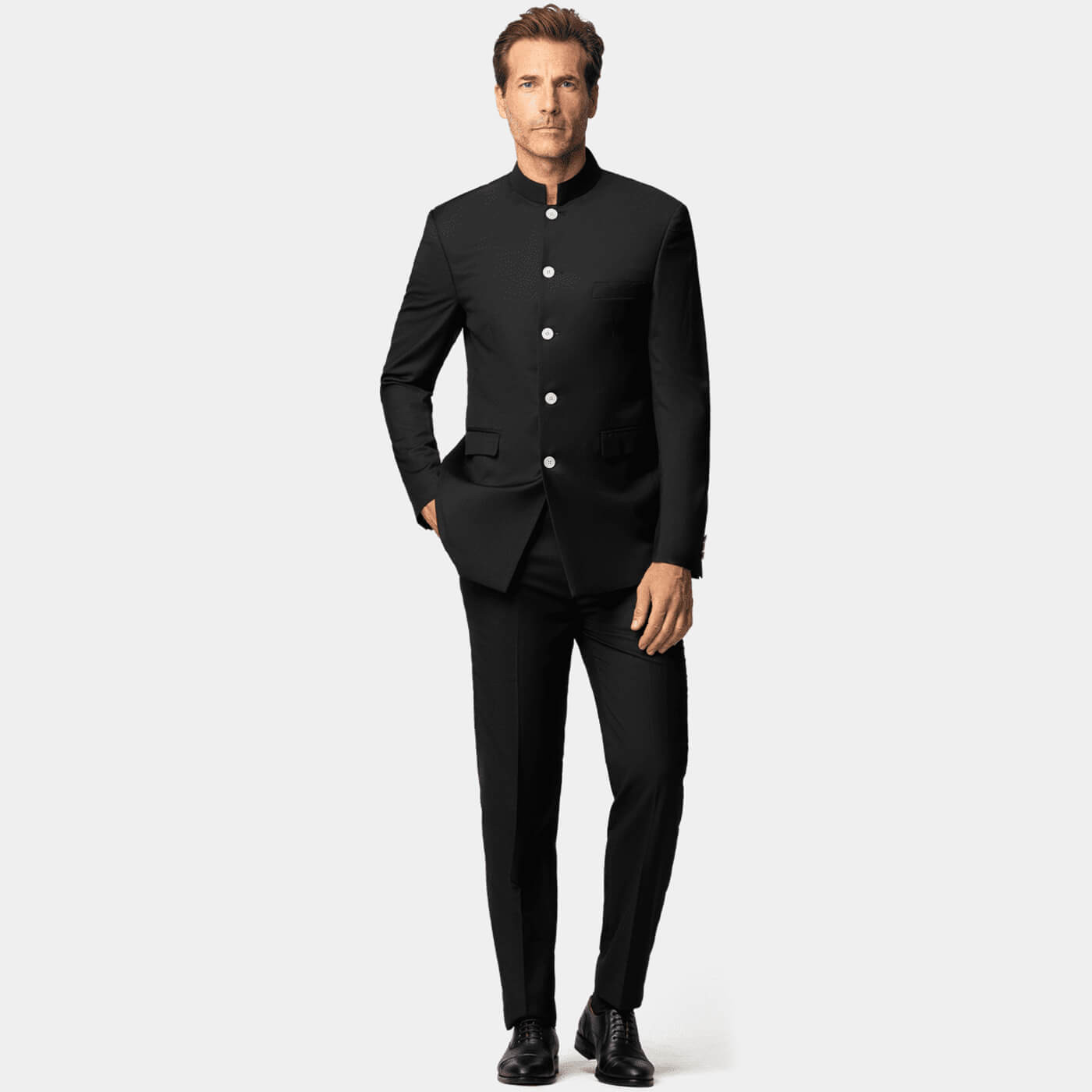
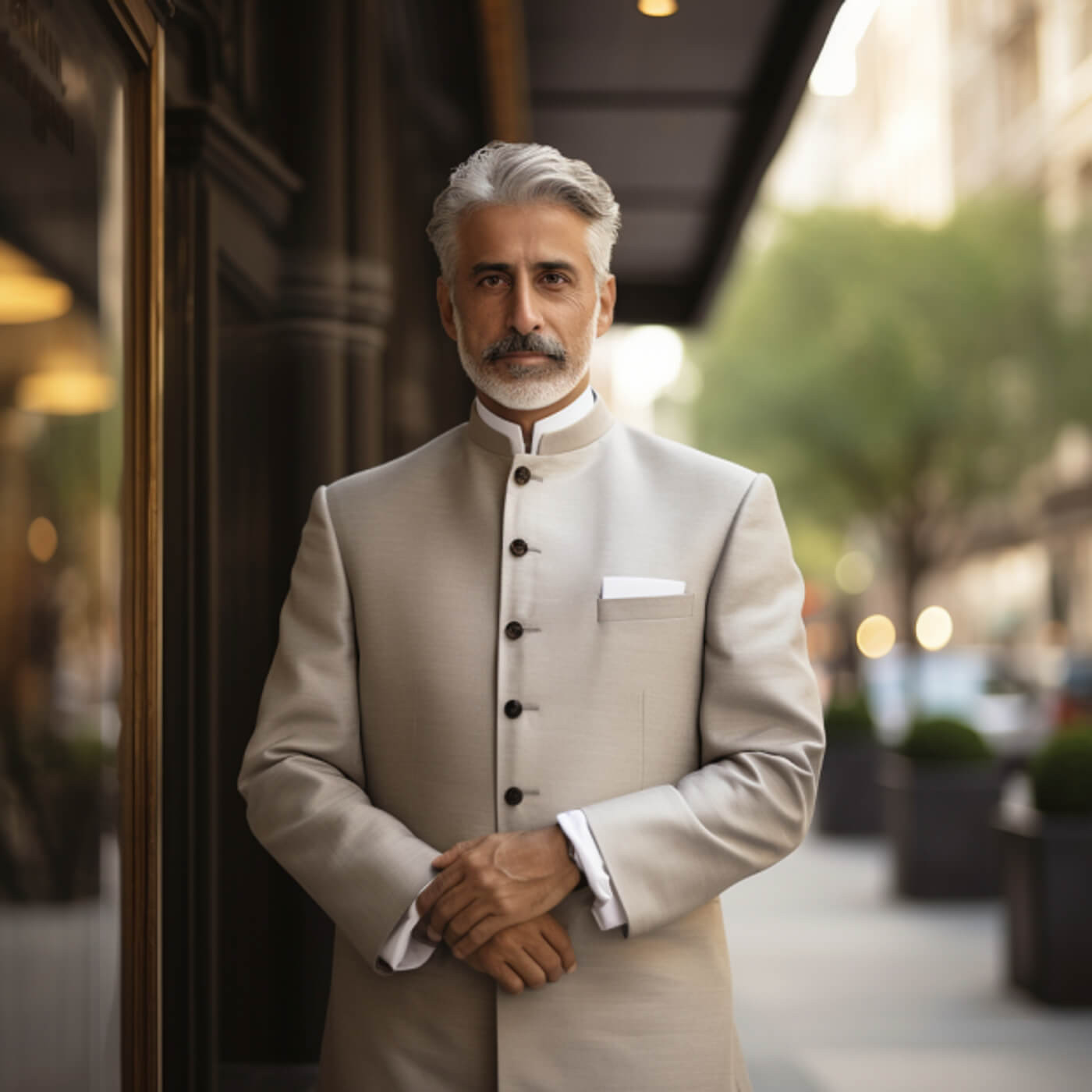
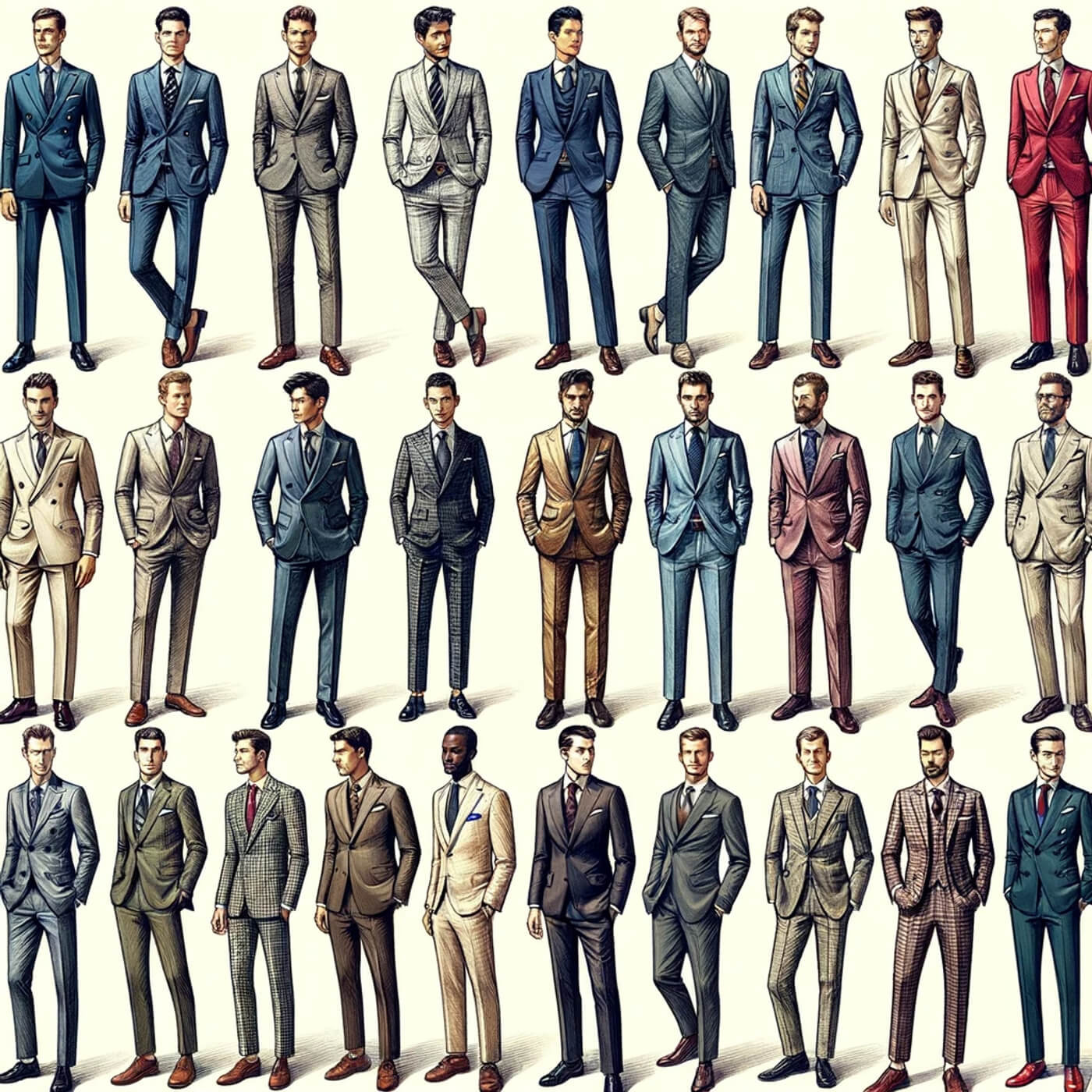



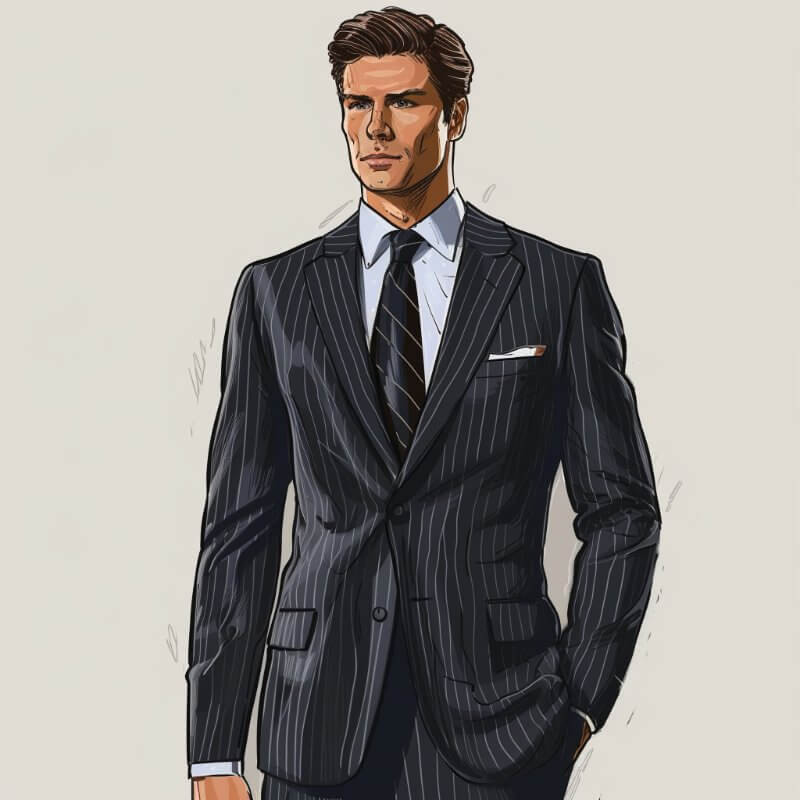
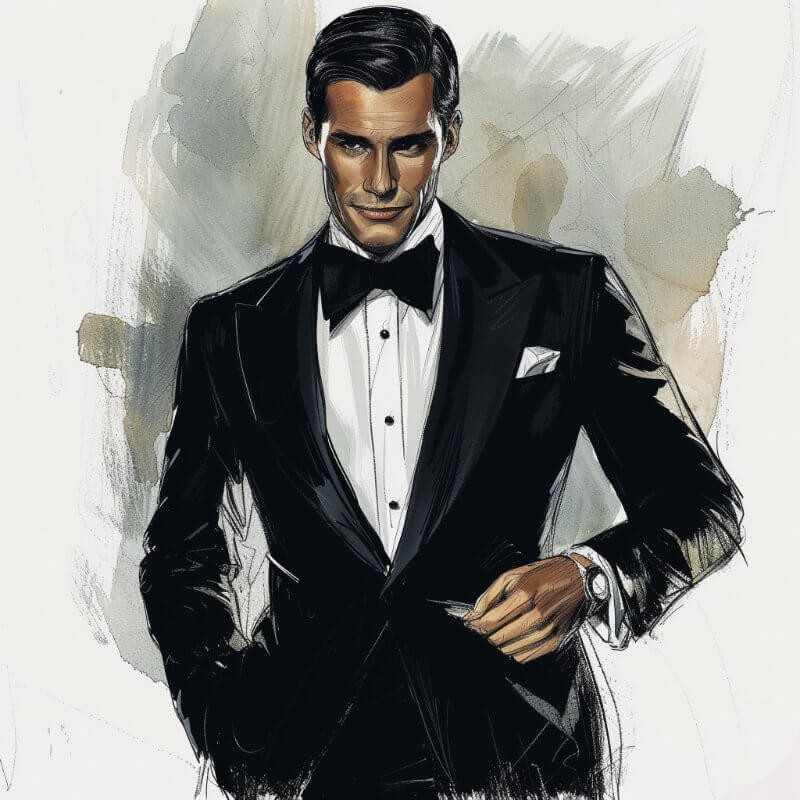
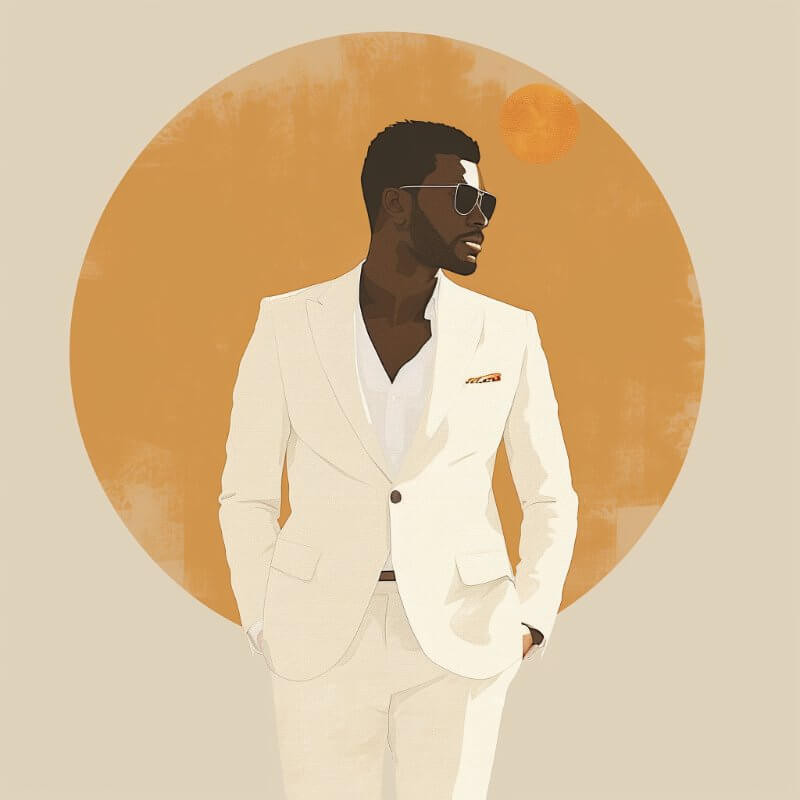
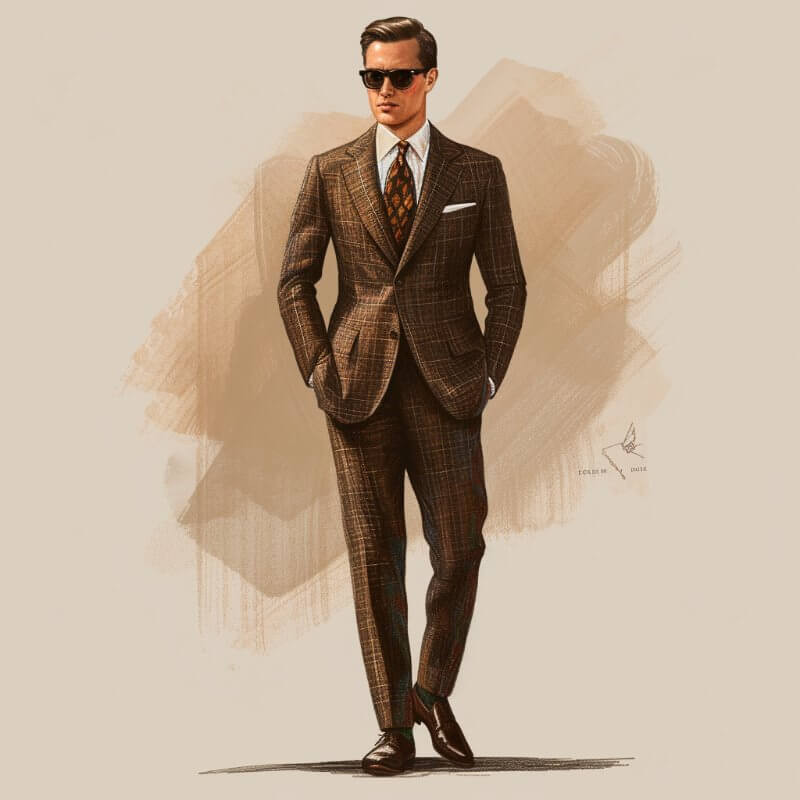
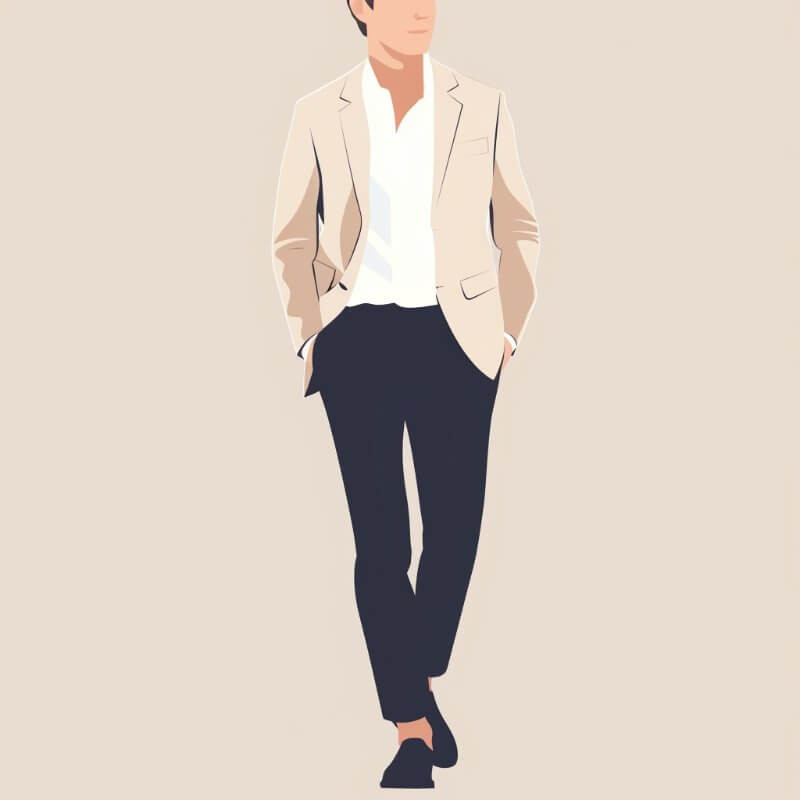


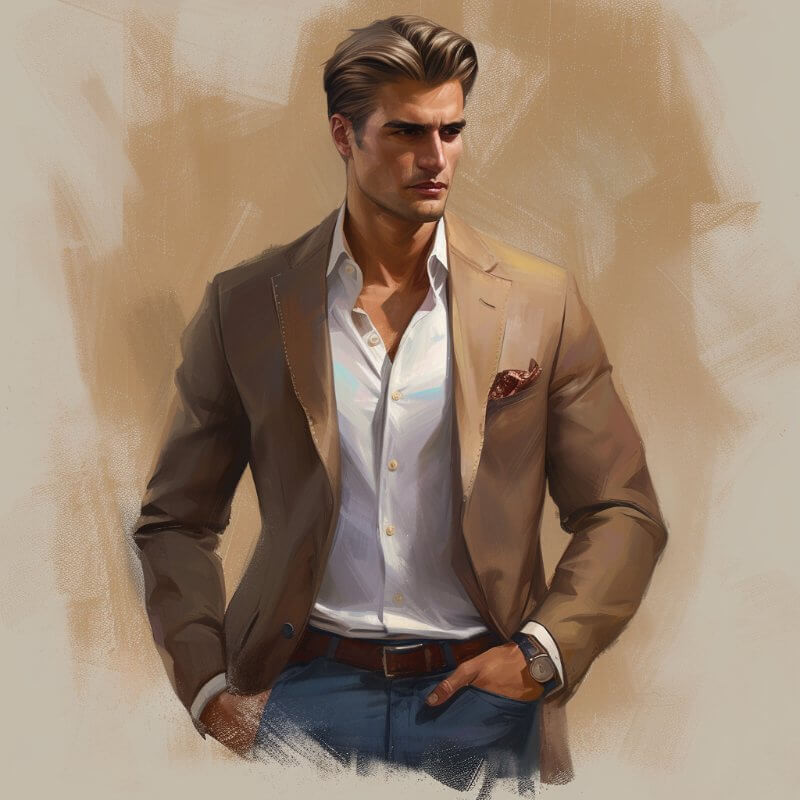


Suit Fit Types: Tailoring Your Style
Suit fit is paramount in suit fashion, influencing both comfort and appearance. Different fits cater to various body types and style preferences.
Slim Fit Suits: The Modern, Tailored Look
As the name suggests, slim-fit suits are tailored close to the body, defining a contemporary suit fashion aesthetic. Despite the close fit, they are designed to allow freedom of movement, avoiding a restrictive feel. Characterized by a narrower cut through the chest, shoulders, and waist, and finishing with slim-fitting trousers, this style is particularly flattering for men with slender or athletic builds, emphasizing a streamlined silhouette in suit fashion.
- Key Features: Close-fitting design, narrow chest, shoulders, and legs, modern style.
- Style Effect: Slimming and body-defining, accentuating a lean physique.
Regular Fit Suits: Classic Comfort and Versatility
The regular fit, also known as the classic fit, embodies timeless suit fashion. It strikes a balance between a tailored and relaxed silhouette, being neither too tight nor too loose. This fit prioritizes comfort, especially across the chest and shoulders. The jacket is gently shaped, falling to the hips, while the trousers offer a looser cut with a straight leg opening. Regular fit suits are exceptionally versatile, making them an essential addition to any wardrobe. Their adaptability and flattering cut for all body types solidify their place in classic suit fashion.
- Key Features: Relaxed and comfortable fit, mid-length jacket, straight-leg trousers, traditional style.
- Style Effect: Naturally shaping, relaxed yet put-together appearance, suitable for all body types.
Modern Fit Suits: The Best of Both Worlds
Modern fit suits bridge the gap between slim and regular fits, embodying a balanced approach to suit fashion. While still tailored, they offer slightly more room than slim fits, enhancing their versatility and appeal to a broader range of body types. Effectively a hybrid of regular and slim fits, the modern fit suit is an adaptable choice for those seeking a contemporary yet comfortable style within suit fashion.
- Key Features: Tailored fit, more room than slim fit, blend of regular and slim elements, contemporary style.
- Style Effect: Versatile and accommodating, suitable for various body types and occasions, modern and stylish.
Suit Lapel Types: Defining the Jacket’s Character
Lapels are a defining feature of suit jackets, significantly impacting the overall style and formality of suit fashion.
Peak Lapel Suits: Bold and Formal Elegance
The peak lapel is characterized by its dramatic, pointed tips that extend upwards towards the shoulders, making a strong statement in suit fashion. This lapel style is notably formal, often seen on red carpets and at high-profile events, favored by celebrities for its sophisticated edge. Peak lapels are particularly well-suited to double-breasted suits, enhancing their inherent formality. For individuals with rounder facial features, the sharp lines of a peak lapel can create a flattering contrast, adding balance and definition to the face in suit fashion.
- Key Features: Sharp, upward-pointing lapel tips, formal and distinctive.
- Style Effect: Adds sharpness and formality, balances round face shapes, commands attention.
Notch Lapel Suits: The Versatile and Classic Choice
The notch lapel is the most common and versatile lapel style in suit fashion. It’s characterized by a subtle indentation, or ‘notch,’ where the lapel meets the jacket collar, typically at a 90-degree angle. Softer and less pronounced than the peak lapel, the notch lapel is adaptable to a wide range of suits and occasions. Its versatility makes it a universally flattering choice, suitable for virtually anyone and any event that isn’t strictly black-tie, establishing it as a staple in suit fashion.
- Key Features: Notch at lapel-collar junction, softer and more versatile.
- Style Effect: Universally flattering, suitable for most occasions, understated elegance.
Shawl Lapel Suits: The Epitome of Formal Refinement
Shawl lapels are defined by their rounded, continuous curve, forming a seamless piece of fabric around the jacket collar. This style is the most formal of lapel options in suit fashion, primarily reserved for black-tie events and frequently featured on tuxedos. The soft, rounded lines of the shawl lapel are particularly complementary to men with sharp facial features, creating a harmonious balance. Shawl lapels represent the pinnacle of formal suit fashion, exuding sophistication and elegance.
- Key Features: Rounded, continuous lapel fabric, most formal lapel style.
- Style Effect: Softens sharp features, adds a touch of ultimate elegance, strictly formal occasions.
Suit Fabrics: Choosing Material for Style and Comfort
The choice of fabric is crucial in suit fashion, impacting not only the suit’s appearance but also its comfort, durability, and suitability for different climates and occasions.
Wool Suits: The Premier Choice for Versatility and Durability
Wool is the most favored fabric for suits, renowned for its exceptional qualities in suit fashion. It offers a multitude of benefits including durability, wrinkle resistance, water resistance, and breathability. Investing in a high-quality wool suit is a wise decision, as it promises longevity, lasting for decades while providing superior comfort, especially vital during demanding workdays. Wool’s excellent heat insulation also makes it ideal for colder seasons, solidifying its status as a top choice in suit fashion.
- Key Features: Durable, wrinkle and water-resistant, breathable, versatile.
- Style Effect: Classic look, suitable for all seasons and occasions, signifies quality and investment in suit fashion.
Tweed Suits: Rustic Charm and Winter Warmth
Tweed, a robust fabric woven from tightly packed, dyed wool, has experienced a resurgence in suit fashion. Its water-repellent properties and substantial warmth make tweed suits ideal for winter or rainy conditions, offering practical weather resistance. The thick, coarse nature of tweed provides significant insulation, positioning it as an excellent choice for colder climates and adding a touch of rustic elegance to suit fashion.
- Key Features: Thick, tightly woven wool, water-repellent, warm, textured.
- Style Effect: Warm and rugged, perfect for cold weather, adds a vintage, country-inspired element to suit fashion.
Cotton Suits: Lightweight and Breathable Summer Comfort
Cotton stands as the second most popular suit fabric after wool, particularly favored for warmer weather in suit fashion. Cotton suits are lightweight and breathable, making them superior for summer compared to winter. Additional benefits include hypoallergenic and odor-resistant properties, ideal for hot, humid days. However, cotton suits are more susceptible to damage due to their organic composition, requiring careful washing and maintenance to preserve their place in suit fashion.
- Key Features: Lightweight, breathable, hypoallergenic, comfortable.
- Style Effect: Casual and relaxed, perfect for summer, comfortable in warm climates, suitable for less formal suit fashion.
Linen Suits: Breathable Elegance for Hot Climates
Linen is surprisingly durable, even more so than cotton, making it a practical choice in suit fashion. Despite being made from organic flax plant fibers, linen’s moisture-protective qualities enhance its resilience. Linen absorbs less moisture than cotton, making it exceptionally suited for hot weather, offering superior breathability. Hypoallergenic and wonderfully soft, linen suits are ideal for those prioritizing comfort and breathability in summer suit fashion.
- Key Features: Durable, moisture-protective, soft, hypoallergenic, highly breathable.
- Style Effect: Relaxed and effortlessly elegant, ideal for hot weather, casual summer suit fashion.
| Fabric | Qualities | Best for |
|---|---|---|
| Wool | Versatile, breathable, various weights, durable. | All-year wear, all occasions, investment piece in suit fashion |
| Linen | Light, breathable, wrinkles easily, soft. | Summer, casual events, relaxed suit fashion |
| Cotton | Mid-weight, breathable, less wrinkle-resistant than wool. | Casual to semi-formal events, warm weather, versatile suit fashion |
| Silk | Luxurious, lightweight, delicate, less durable. | Special formal events, evening wear, high-end suit fashion |
Suit Vents: Functionality and Style at the Back
Suit vents, the slits at the back of the jacket, are functional design elements that impact comfort and silhouette in suit fashion.
Center Vent Suits: Classic American Comfort
The center vent, or single vent, is a single slit located in the middle of the jacket’s back. This vent style is particularly prevalent in American suit fashion and was highly popular in the mid-20th century. Center vents prioritize comfort, allowing for greater freedom of movement. However, they can sometimes splay open when hands are placed in pockets, potentially revealing part of the back if the fit isn’t precisely tailored, which is a consideration in suit fashion aesthetics.
- Key Features: Single vent in the center back, traditional American style.
- Style Effect: Comfortable and practical, allows movement, classic silhouette in suit fashion.
Double Vent Suits: European Sophistication and Slimming Effect
Double vent suits feature two vents positioned on either side of the jacket’s back hem. Originating from Europe, double vents are often perceived as more sophisticated and stylish in suit fashion. They require more intricate tailoring, adding to their cost, and contribute to a more streamlined torso appearance. Favored for their blend of style and functionality, double vents are a hallmark of refined suit fashion.
- Key Features: Two vents at the back hem, European style, enhanced silhouette.
- Style Effect: Sophisticated and stylish, creates a slimmer torso, allows for movement without compromising shape in suit fashion.
Ventless Suits: Sleek Lines and Formal Appeal
Ventless suits, lacking any back vents, present the sleekest silhouette in suit fashion. Commonly found on tuxedos, ventless jackets are best suited for formal black-tie events. While they excel at highlighting the wearer’s physique, they come with a practical drawback: sitting or putting hands in pockets can cause creasing, making them less functional for everyday wear but ideal for purely aesthetic suit fashion moments.
- Key Features: No vents at the back, minimalist and sleek, most formal vent style.
- Style Effect: Ultra-sleek silhouette, emphasizes body shape, best for formal occasions where movement is limited in suit fashion.
Suit Pocket Types: Functionality Meets Style
Suit pockets are not merely practical elements; they contribute significantly to the suit’s style, ranging from casual to formal in suit fashion.
Patch Pocket Suits: Relaxed and Casual Style
Patch pockets are externally stitched onto the suit jacket, making them a more casual pocket style in suit fashion. Made from the same fabric as the jacket, they are commonly found on sports coats and casual suits. Patch pockets are practical for carrying small items like phones or keys, adding a relaxed touch to suit fashion.
- Key Features: External pockets, made of suit fabric, casual style.
- Style Effect: Relaxed and informal, adds a casual touch to the suit, functional for everyday suit fashion.
Flap Pocket Suits: Versatile and Semi-Formal
Flap pockets are smaller and less prominent than patch pockets, offering a more refined look in suit fashion. They feature a rectangular flap that covers the pocket opening, while the pocket itself is constructed internally. Made from the same fabric as the suit, flap pockets are versatile, suitable for both business suits and sports coats, bridging the gap between casual and formal suit fashion.
- Key Features: Internal pockets with fabric flaps, semi-formal and versatile.
- Style Effect: Balanced and adaptable, suitable for business casual to semi-formal settings, most versatile pocket in suit fashion.
Jetted Pocket Suits: Sleek and Highly Formal
Jetted pockets, also known as besom pockets, are similar to flap pockets but without the flap, presenting a streamlined and minimalist aesthetic in suit fashion. Constructed inside the jacket, they offer a clean, uninterrupted line, making them ideal for formal wear like tuxedos and dinner jackets. Jetted pockets are the epitome of formal pocket styles, enhancing the sleekness of high-end suit fashion.
- Key Features: Internal pockets without flaps, minimalist design, highly formal.
- Style Effect: Sleek and clean, enhances formality, perfect for tuxedos and formal suit fashion.
Welted Pocket Suits: The Classic Breast Pocket
Welted pockets, typically referring to the breast pocket on a suit jacket, are a standard feature in suit fashion. These pockets are designed for holding a pocket square or handkerchief, adding a touch of classic elegance. Constructed from the same fabric as the jacket and with an internal structure similar to jetted pockets, welted pockets are essential for completing a traditional suit fashion look.
- Key Features: Breast pocket, same fabric as jacket, classic design.
- Style Effect: Adds a traditional and polished touch, designed for pocket squares, integral to classic suit fashion.
Suit Button Styles: From Casual to Formal
The number of buttons on a suit jacket influences its formality and style, providing options for different suit fashion preferences.
One-Button Suits: Modern and Casual Sophistication
One-button suits feature a single button closure at the jacket’s center, representing the most casual option in suit fashion. This style allows for greater freedom of movement and creates a slimming effect across the shoulders, often balancing well with wider peak lapels. One-button jackets can create the illusion of height, making them particularly flattering for shorter men in suit fashion.
- Key Features: Single button closure, modern and slightly casual.
- Style Effect: Slimming, elongating, modern aesthetic, suitable for contemporary suit fashion.
Two-Button Suits: The Universally Versatile Choice
Two-button jackets are among the most prevalent suit styles, offering exceptional versatility in suit fashion. Ideal for business casual settings, they strike a balance between formal and informal, suitable for a wide array of occasions. Flattering for most body types, two-button suits provide a subtle slimming effect without feeling overly restrictive, making them a staple in versatile suit fashion.
- Key Features: Two-button closure, highly versatile and common.
- Style Effect: Flattering for most body types, subtly slimming, perfect for business casual and everyday suit fashion.
Three-Button Suits: Formal and Traditional Stature
Three-button suits are the most formal single-breasted option, projecting a traditional and sophisticated image in suit fashion. The additional button creates a shallower V-cut and shorter lapels, which is particularly well-suited for taller individuals or those with athletic builds. Three-button suits convey a sense of formality and classic style, making them appropriate for more traditional suit fashion settings.
- Key Features: Three-button closure, formal single-breasted style.
- Style Effect: Formal and traditional, best for taller or athletic builds, classic and authoritative suit fashion.
Buttoning Rules for Suits: Etiquette Essentials
- The Last Button Rule: For two or three-button suits, always leave the last button undone. This tradition dates back to early 20th-century England and King Edward VII. For more details, refer to our guide on Suit Buttons: Everything You Need to Know.
- Sitting Etiquette: Always unbutton all suit buttons when sitting down. This prevents the jacket from straining and stretching awkwardly across the back, maintaining the suit’s shape and longevity in suit fashion.
Suit Canvas Types: The Foundation of Fit and Drape
Canvas is the internal structure of a suit jacket, a layer of fabric between the lining and outer material, crucial for shape, drape, and fit in suit fashion. Typically made from natural fibers mixed with animal hairs, canvas provides structure and durability.
Full Canvas Suits: Superior Drape and Durability
Full canvas suits feature a canvas layer that extends from the chest area, including the lapel, down to the jacket’s hem. Although more expensive, full canvas construction offers superior drape and molds to the wearer’s body over time, improving fit and comfort. Durability is also enhanced, particularly at stress points like shoulders and elbows, making full canvas suits a hallmark of high-quality suit fashion.
- Key Features: Canvas from chest to hem, highest quality construction, durable.
- Style Effect: Exceptional drape and fit, molds to body over time, signifies premium suit fashion.
Half Canvas Suits: Balancing Quality and Cost
Half canvas suits have a canvas layer that starts at the shoulder and extends only halfway down the jacket, primarily in the chest and lapel area. This construction is a more cost-effective alternative to full canvas while still providing structure and definition. While not offering the full benefits of a full canvas suit in terms of drape and long-term molding, half canvas remains a solid choice for quality suit fashion.
- Key Features: Canvas from shoulder to mid-jacket, good quality-to-cost ratio.
- Style Effect: Maintains shape and structure, good balance of quality and affordability in suit fashion.
Fused Suit Suits: Economical but Less Durable
Fused suits use an interlining that is glued to the suit fabric instead of being sewn. This is the most economical suit construction method, but it compromises quality and durability. Fused suits typically lack the superior fit and drape of canvas suits, and the glue can degrade over time, reducing the suit’s lifespan in suit fashion.
- Key Features: Interlining glued to fabric, most affordable construction.
- Style Effect: Acceptable appearance for the price, less durable and less refined fit compared to canvas suits in suit fashion.
Special Suit Types: Unique Styles for Specific Occasions
Beyond the standard suit types, several special suits cater to unique occasions or cultural styles within suit fashion.
Tuxedos: The Quintessential Evening Wear
- Origins: The tuxedo originated in Tuxedo Park, New York, lending it its name, and is synonymous with formal suit fashion.
- Distinguishing Features: Satin or grosgrain is the defining material, featured on lapel facings, buttons, pocket trims, and trouser side stripes.
- Usage: Primarily for black-tie events, the tuxedo represents the pinnacle of men’s evening wear.
- Variations: Available in single and double-breasted styles, often paired with a cummerbund or low-cut waistcoat, offering versatility within formal suit fashion.
Morning Suits: Daytime Formal Elegance
Morning suits are traditionally worn for daytime formal events, such as weddings and races, embodying a classic and elegant form of suit fashion.
Mandarin/Collarless Suits: Modern Minimalist Style
Mandarin or collarless suits offer a contemporary and minimalist approach to suit fashion, distinguished by their stand-up collar and clean lines.
Nehru Suits: Cultural Elegance with a Stand Collar
Nehru suits, inspired by Indian culture, feature a distinctive stand-up collar similar to mandarin suits but often include a button-up front and are typically made from materials like khadi or silk, adding a cultural dimension to suit fashion.
The world of suit fashion is incredibly diverse. Choosing the right suit is an art that balances occasion, personal style, and comfort. This comprehensive guide equips you to navigate suit selection with confidence, ensuring you always present your best self, impeccably tailored and elegantly styled, in any suit fashion context.
Choosing the Right Suit for Every Occasion
Selecting the appropriate suit is essential for making a positive impression. Here’s a guide to help you choose the perfect suit for any event, ensuring you’re always in line with suit fashion etiquette.
1. Consider the Occasion:
- Formal/Black-Tie Events: Opt for a Tuxedo or Morning Suit for ultimate formality.
- Business/Work Settings: Choose a Business Suit in conservative colors like navy or charcoal. Single-breasted notch lapel suits are standard.
- Casual Outings: Casual or Lounge Suits, such as linen or cotton suits, are appropriate for a relaxed yet stylish look.
- Travel: Travel Suits made from wrinkle-resistant fabrics are ideal for maintaining a sharp appearance on the go.
2. Regional Style Preferences:
- Italian Suits: Known for their elegant and slim silhouettes.
- British Suits: Classic and refined, with structured tailoring.
- American Suits: Generally more comfortable and practical with a relaxed fit.
3. Suit Fit Preference:
- Slim Fit: Close-fitting and modern, ideal for slender builds.
- Classic Fit: Traditional silhouette, comfortable and versatile.
- Modern Fit: A balanced fit, combining elements of slim and classic.
- Relaxed Fit: Roomier and more comfortable, suitable for casual settings.
4. Climate and Seasonality:
- Warm/Humid Climates: Summer Suits in light fabrics like linen or lightweight cotton are essential for comfort.
- Cold/Chilly Climates: Winter Suits made from heavier wools or blends provide necessary warmth.
5. Fabric Choice:
- Luxurious Fabrics: Wool varieties like Merino or Cashmere offer softness and quality.
- Lightweight Fabrics: Cotton or Linen are perfect for breathability and warm weather.
- Unique Fabrics: Velvet or Silk suits make a bold, shiny statement for special occasions.
- Budget-Friendly Fabrics: Synthetic materials or blends can offer affordability.
6. Investment Level:
- Budget-Friendly: Off-the-Rack suits are readily available and affordable.
- Mid-Range: Made-to-Measure suits offer a personalized fit at a moderate price.
- High-End: Bespoke suits provide ultimate customization and premium quality.
7. Jacket Details:
- Buttons: One-button for modern style, two-button for versatility, three-button for tradition, four-button for a unique look.
- Lapels: Notch lapels for everyday wear, Peak lapels for formality, Shawl lapels for tuxedos.
- Vents: Ventless for a sleek look, Center vents for traditional comfort, Side vents for ease of movement.
8. Trouser Style:
- Flat Front Trousers: Modern and streamlined.
- Pleated Trousers: Traditional and can offer more room.
- Trouser Cuffs: Choose between Cuffed or Non-Cuffed based on personal style and formality.
Selecting the Right Suit for Specific Occasions
Beach Wedding
Opt for a light-colored linen suit for a beach wedding, perfect for suit fashion in a relaxed, warm setting.
- Standard Choice: Linen Suit in light colors (beige, light blue, grey).
- Optional: Lightweight Cotton Suit.
- Avoid: Heavy Wool Suits, Double-Breasted Suits.
Corporate Business Meeting
A navy or charcoal single-breasted suit is ideal for corporate business meetings, embodying professional suit fashion.
- Standard Choice: Single-breasted suit (navy, charcoal, black).
- Optional: Three-piece suit for added formality.
- Avoid: Bold colors/patterns, Linen/Cotton fabrics.
Cocktail Party
Choose a slim-fit suit in darker colors for a cocktail party, a stylish choice in suit fashion for evening events.
- Standard Choice: Slim Fit Suit (navy, dark grey).
- Optional: Velvet Blazer for a luxurious touch.
- Avoid: Tuxedos, Overly casual suits.
Job Interview
A classic fit navy or charcoal suit is recommended for job interviews, conveying professionalism in suit fashion.
- Standard Choice: Classic Fit Suit (navy, charcoal).
- Optional: Subtle patterned suit (pinstripes).
- Avoid: Flashy colors, Linen/Seersucker suits.
Black Tie Event
A tuxedo is the standard for black tie events, the epitome of formal suit fashion for evenings.
- Standard Choice: Tuxedo.
- Optional: Dinner jacket with black trousers.
- Avoid: Business suits, Light-colored suits.
Outdoor Summer Event
Lightweight linen or cotton suits are perfect for outdoor summer events, ensuring comfort in suit fashion during warm weather.
- Standard Choice: Lightweight Linen or Cotton Suit.
- Optional: Seersucker Suit.
- Avoid: Heavy wool suits, Dark colors.
Winter Formal Event
A heavier wool suit is best for winter formal events, providing warmth and style in suit fashion for colder climates.
- Standard Choice: Wool Suit (heavier weight).
- Optional: Tweed Suit for texture.
- Avoid: Light fabrics like linen, Light colors.
Casual Business Environment
A relaxed fit suit in subtle colors is appropriate for casual business environments, balancing comfort and suit fashion.
- Standard Choice: Relaxed Fit Suit (subtle colors).
- Optional: Blazer with chinos/dress pants.
- Avoid: Tuxedos, Very formal three-piece suits.
Gallery Opening or Creative Event
Opt for a modern fit suit with unique colors or patterns for gallery openings, expressing personal style in suit fashion.
- Standard Choice: Modern Fit Suit (unique color/pattern).
- Optional: Stylish blazer with smart casual trousers.
- Avoid: Overly formal suits, Traditional business suits.
Day at the Races
A morning suit or classic suit with a bold tie is suitable for a day at the races, combining tradition and suit fashion flair.
- Standard Choice: Morning Suit or Classic Suit.
- Optional: Bold tie or pocket square.
- Avoid: Casual wear, Unstructured suits.
Date Night
A casual Italian suit or sports coat is ideal for date night, balancing relaxed and chic suit fashion.
- Standard Choice: Casual suit (Italian suit).
- Optional: Sports coat with jeans.
- Avoid: Overly formal business suits, Tuxedos.
Graduation Ceremony
A modern or slim fit suit in navy or grey is fitting for a graduation ceremony, marking a milestone in smart suit fashion.
- Standard Choice: Slim/Modern Fit Suit (navy, grey) or Tuxedo.
- Optional: Blazer and dress pants.
- Avoid: Very casual or overly formal attire.
Religious Ceremony
A conservative suit in classic colors is respectful for religious ceremonies, emphasizing understated elegance in suit fashion.
- Standard Choice: Conservative Suit (navy, grey).
- Optional: Three-piece suit.
- Avoid: Flashy colors, Casual suits.
Networking Event
Business casual suits or blazers are appropriate for networking events, balancing approachability and professional suit fashion.
- Standard Choice: Business Casual Suit.
- Optional: Blazer with dress pants.
- Avoid: Full formal suits, Casual attire.
Final Tips for Suit Fashion Success:
- Prioritize comfort above all else.
- Start with essential suits like navy or charcoal before exploring unique styles.
- Always tailor your suits for a perfect fit, enhancing your suit fashion.
Frequently Asked Questions (FAQs) about Types of Suits
- What is the main difference between Single-Breasted and Double-Breasted suits in suit fashion?
- Single-breasted suits have one button row and a narrow overlap, while double-breasted suits have two button rows and a wider overlap.
- Why are there so many fabric options for suits in suit fashion?
- Different fabrics offer varied textures, weights, appearances, comfort, and suitability for climates and occasions.
- How do I know which suit fit is right for me in suit fashion?
- Consider your body type and comfort preference: slim fit for tailored, classic fit for traditional, modern fit for balanced, relaxed fit for casual.
- What determines the type of lapel on a suit in suit fashion?
- Lapel style aligns with formality and personal preference: notch for versatile, peak for formal, shawl for tuxedos.
- Why do some suits have vents while others don’t in suit fashion?
- Vents aid movement and affect drape. Center and side vents offer movement, ventless for a sleeker, more formal look.
- How does suit construction affect quality in suit fashion?
- Bespoke (custom-made) is highest quality, made-to-measure is adjusted fit, off-the-rack is standard sizing; canvas construction (full, half, fused) impacts drape and durability.
- Is the number of buttons on a suit just a style preference in suit fashion?
- Largely yes, though button number affects formality and torso elongation; two-button suits are most common and versatile.
- Why choose special suit types like Nehru or Tuxedo in suit fashion?
- Special types cater to specific occasions, cultural styles, or formality levels; tuxedos for black-tie, Nehru for cultural style.
- What’s the difference between British, Italian, and American suits in suit fashion?
- Regional styles vary in fit, material, design: British structured, Italian slim with soft shoulders, American more relaxed.
- Why are there seasonal variations in suits in suit fashion?
- Seasonal suits ensure comfort and appropriateness: summer suits lightweight, winter suits warmer, heavier fabrics.
- What are the benefits of different pocket styles in suit fashion?
- Pocket styles offer functionality and aesthetics: flap for versatile, jetted for sleek, patch for casual, welted for breast pocket use with handkerchiefs.
- What does the canvas in a suit refer to in suit fashion?
- Canvas is the inner layer giving structure and shape, affecting drape and fit; full canvas best drape, half canvas balance, fused most economical.
- Why opt for a collarless or Mandarin suit in suit fashion?
- Mandarin suits provide a clean, modern, minimalist aesthetic, cultural choice or fashion statement for a unique, lapel-free look.
- How does trouser style affect the overall suit look in suit fashion?
- Trouser styles shape overall look: flat-front modern, pleated traditional, cuffs add weight and affect drape/formality.
- Is there a difference between a travel suit and a regular suit in suit fashion?
- Travel suits designed for travelers, wrinkle-resistant fabrics, functional pockets, ease of maintenance while traveling.
- Why is velvet a suit fabric, and when to wear it in suit fashion?
- Velvet luxurious texture, sheen, for opulent occasions, evening events, parties, bold style statement, less traditional.
- Rules for matching suit fabrics with seasons in suit fashion?
- Traditionally, lighter fabrics (linen) for summer, heavier (wool) for winter, modern fashion bends rules for style/comfort.
- Why are suits described by region (Italian, British) in suit fashion?
- Regional designations refer to traditional tailoring styles and preferences; British structured, Italian soft silhouette, lightweight.
- What occasions call for a morning suit in suit fashion?
- Morning suits for daytime formal events like weddings, races, traditional ceremonies, elegant and formal daytime suit fashion.
- Is there a difference in maintenance between suit types in suit fashion?
- Generally similar care, fabric-specific needs; velvet special care for sheen, wool benefits from brushing, fabric care important for longevity of suit fashion.
